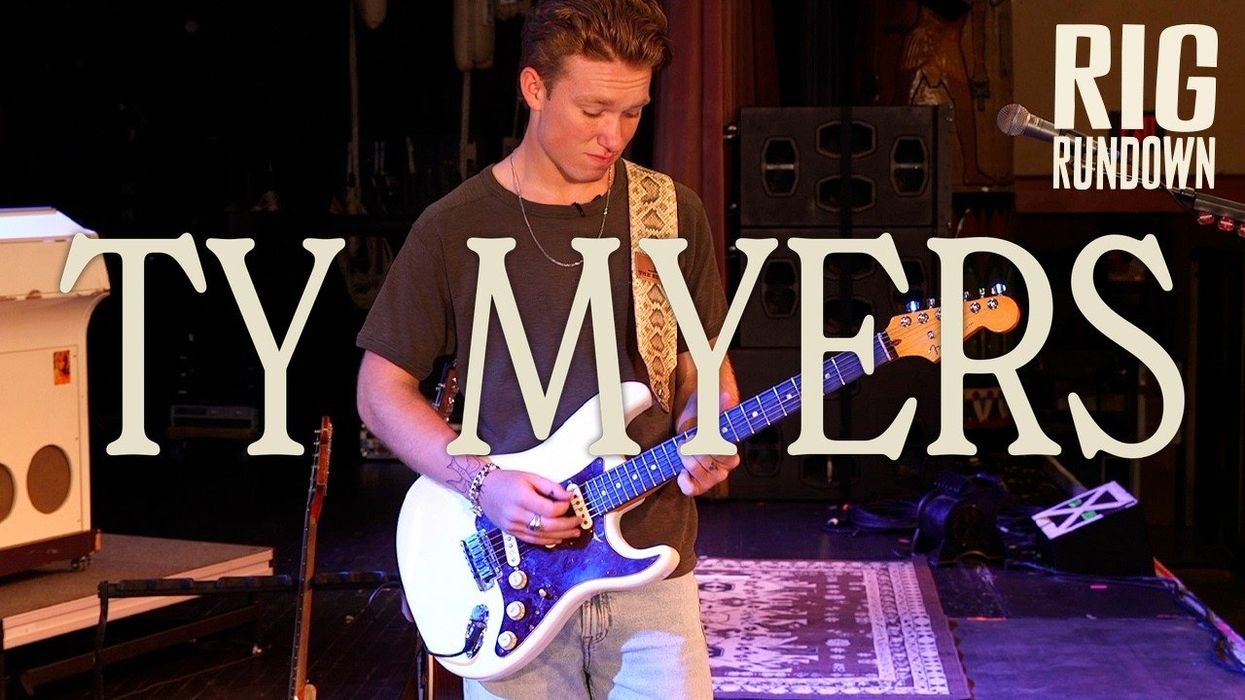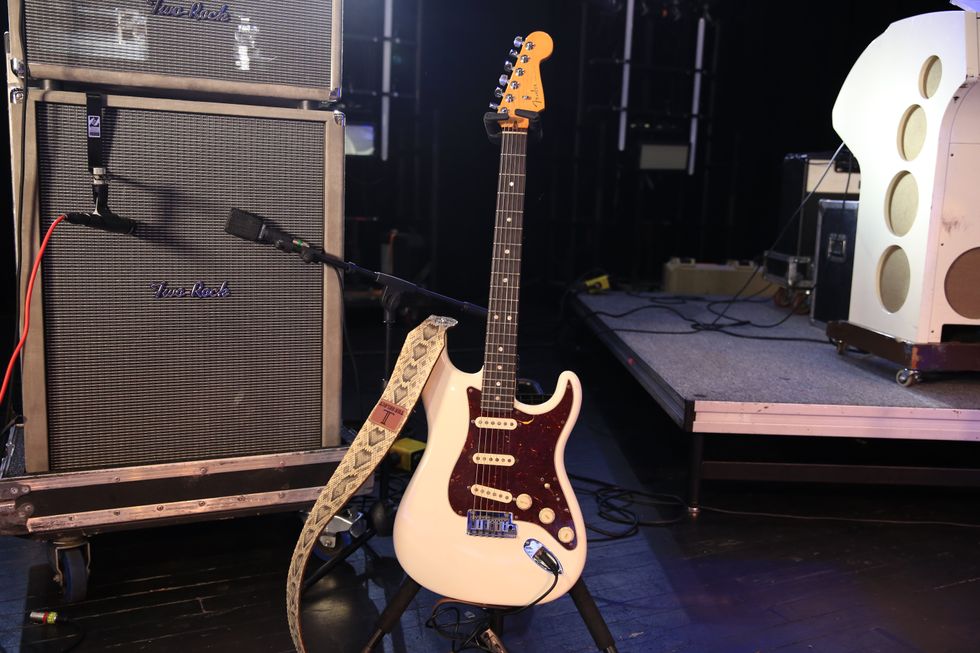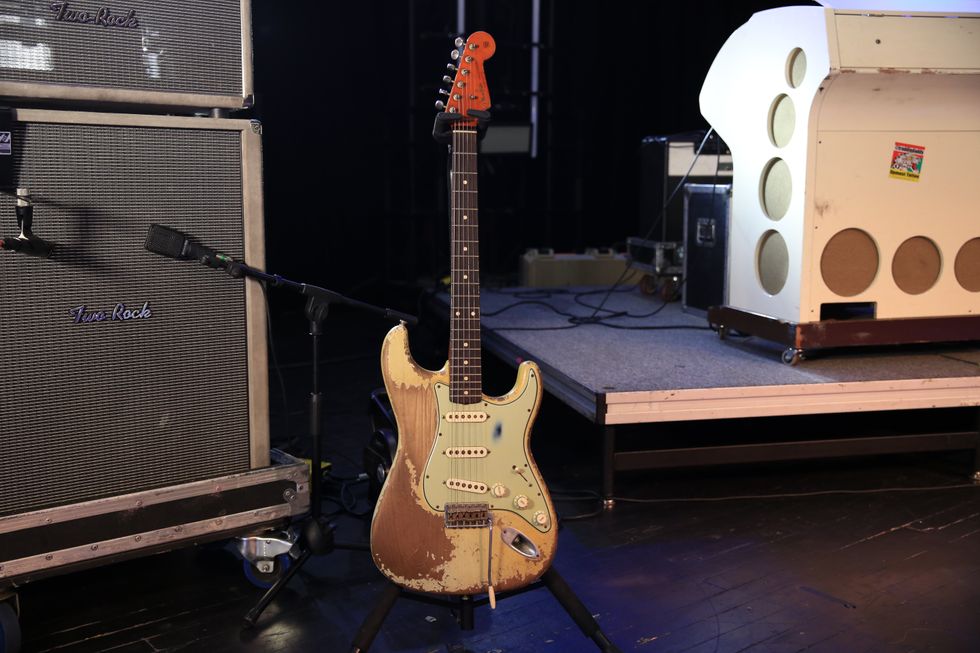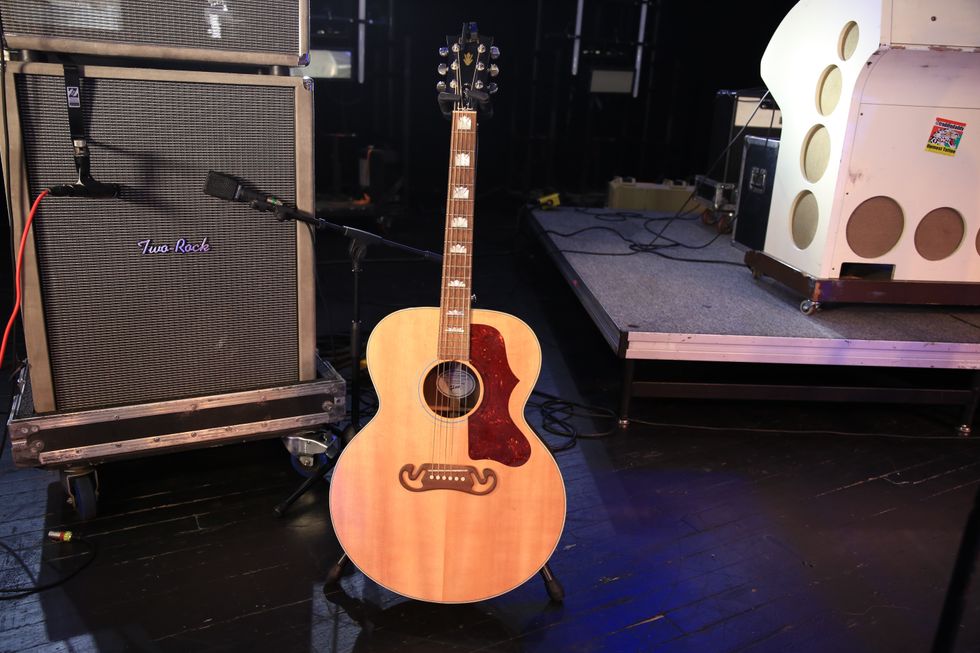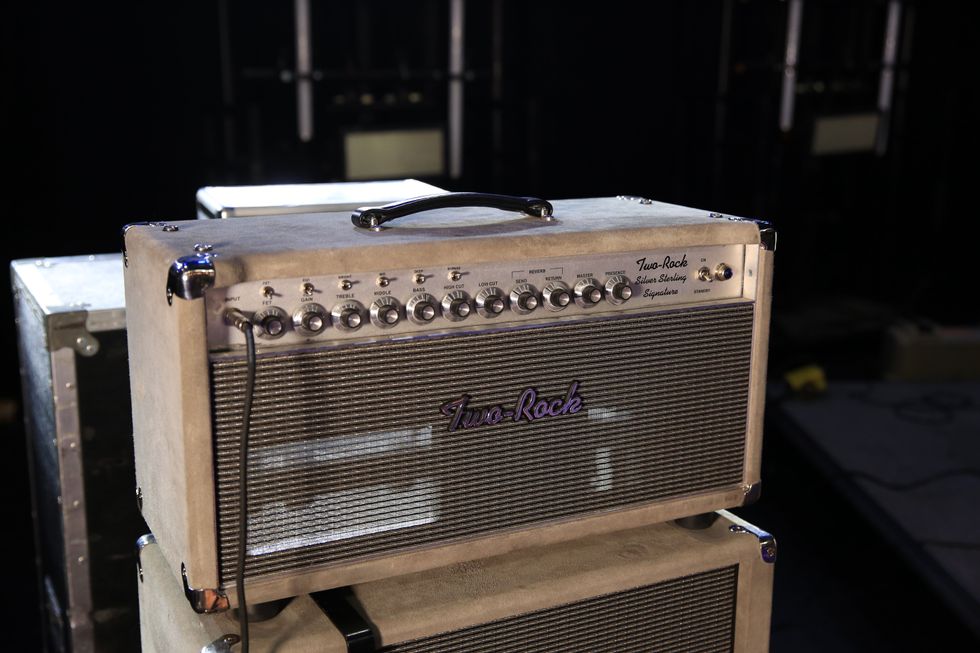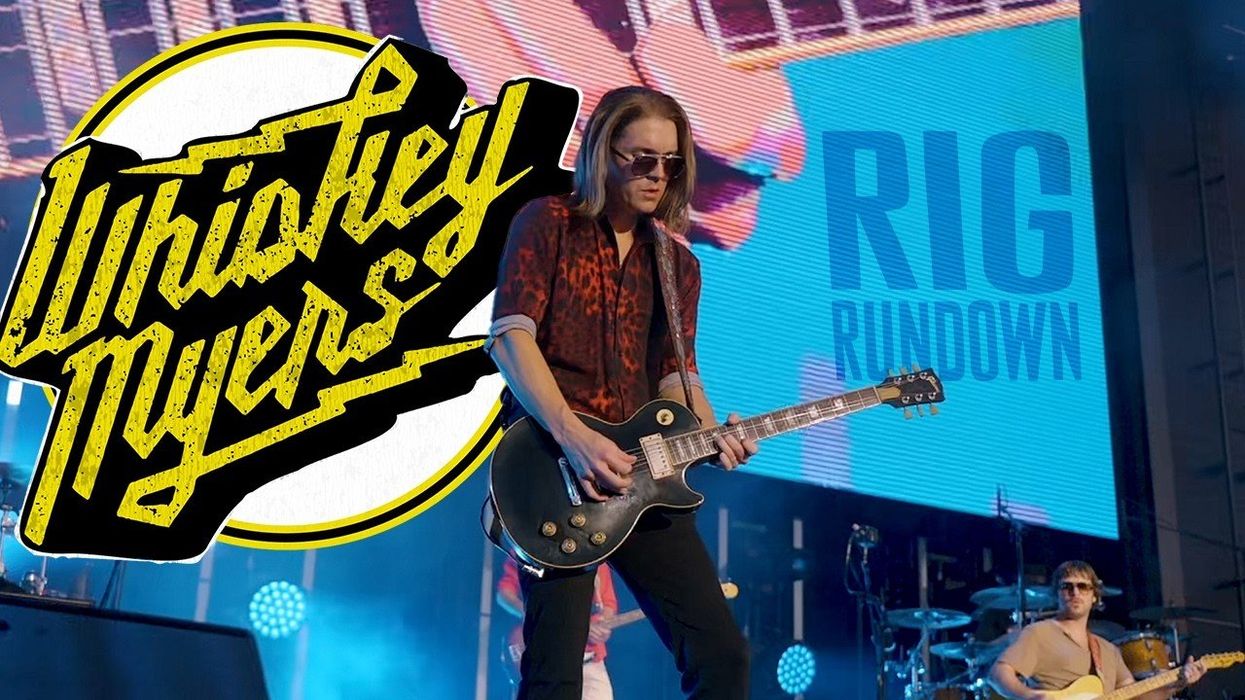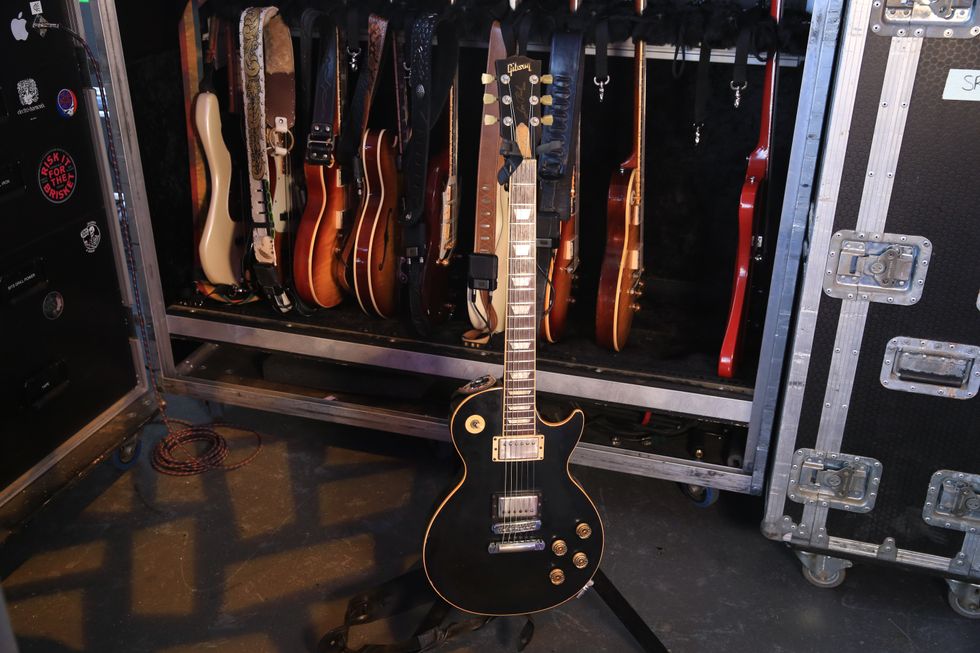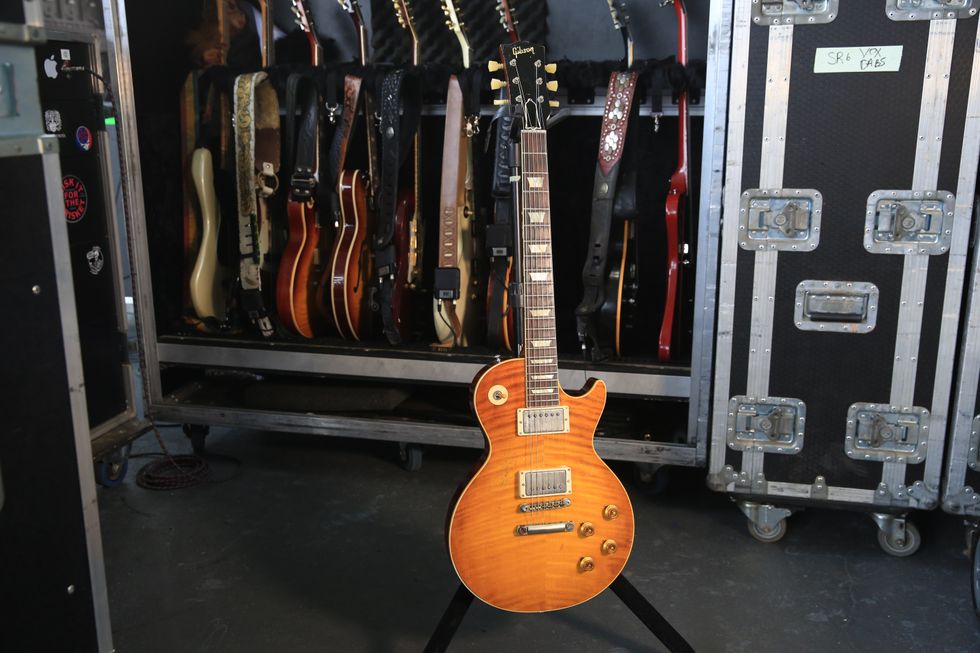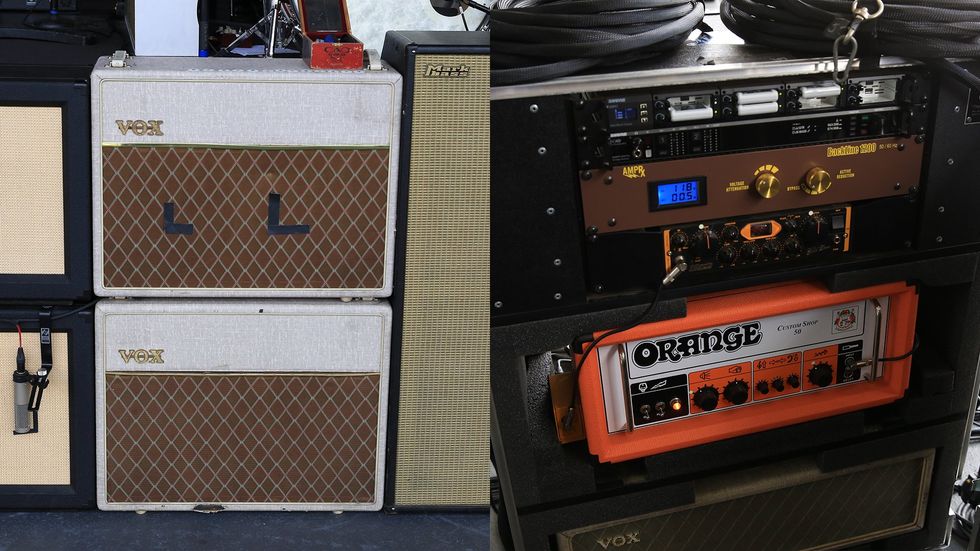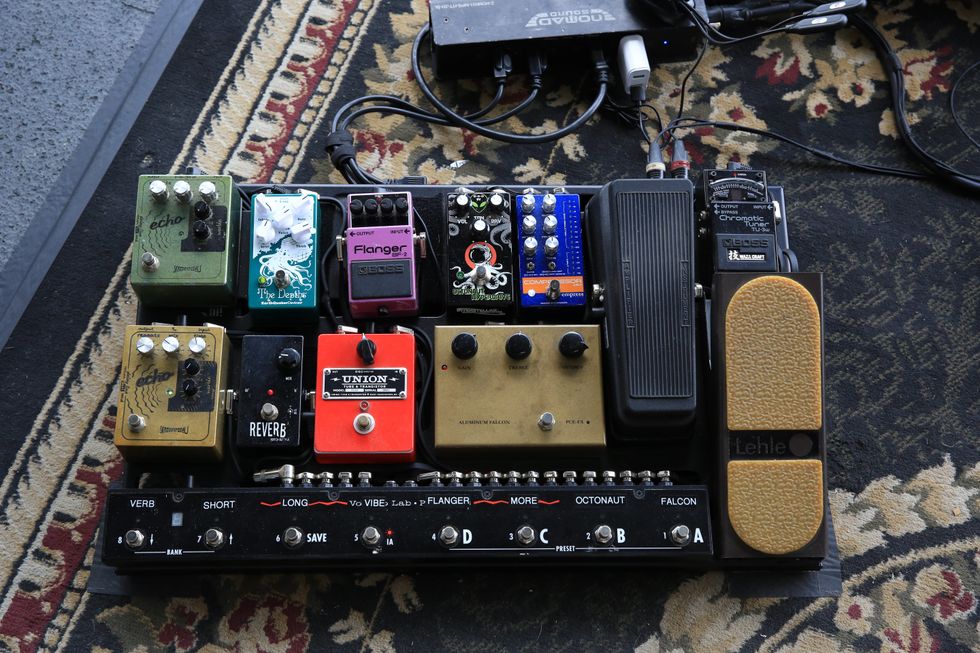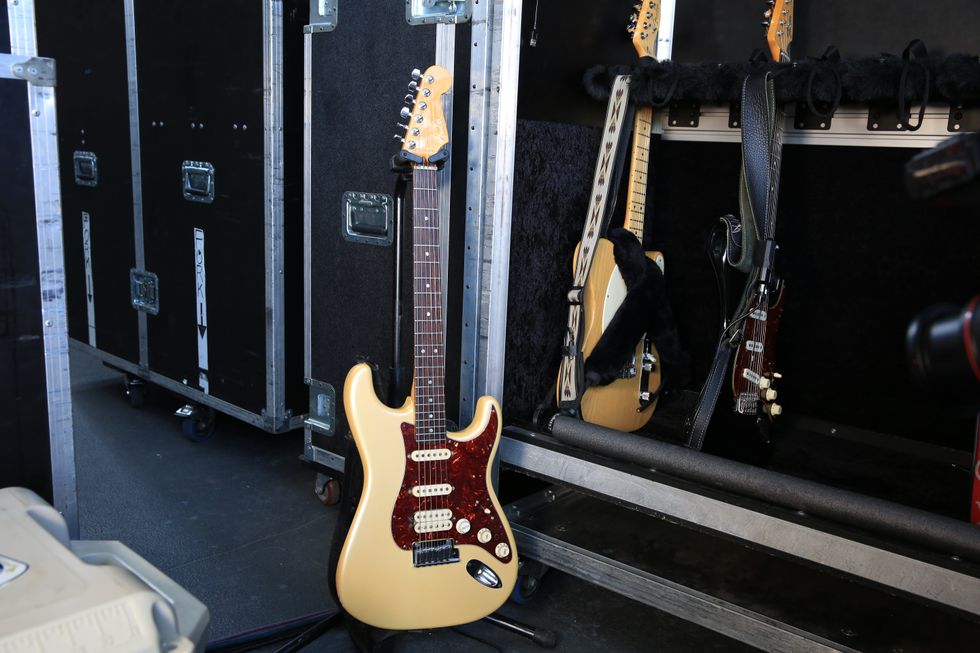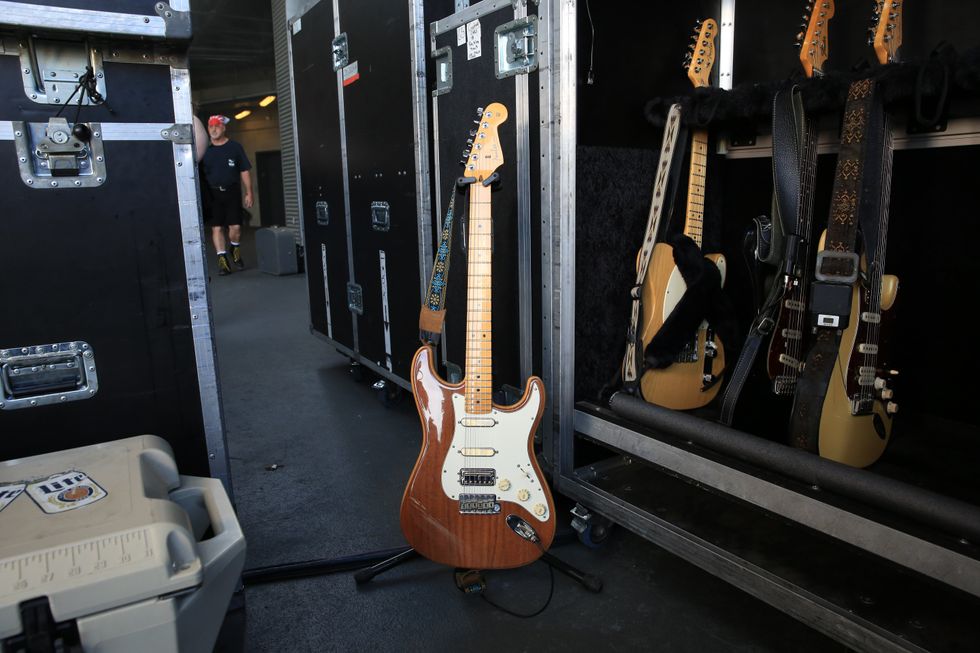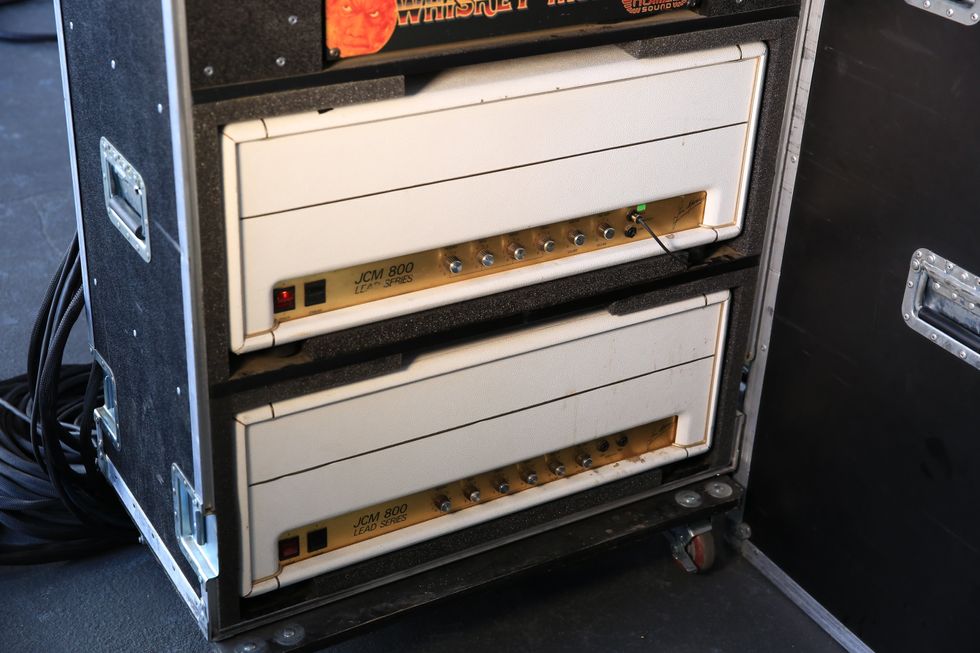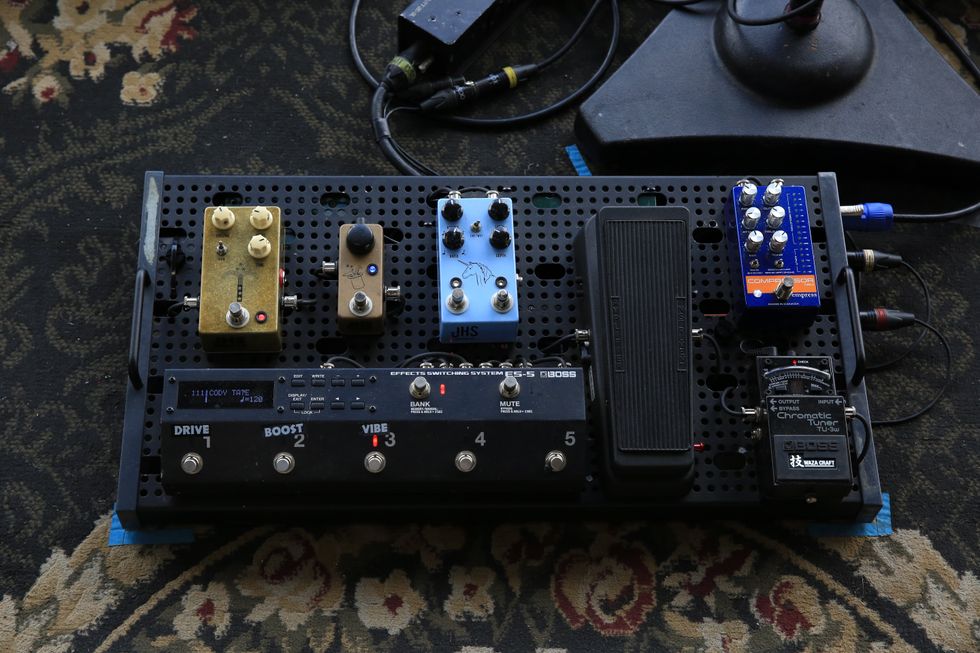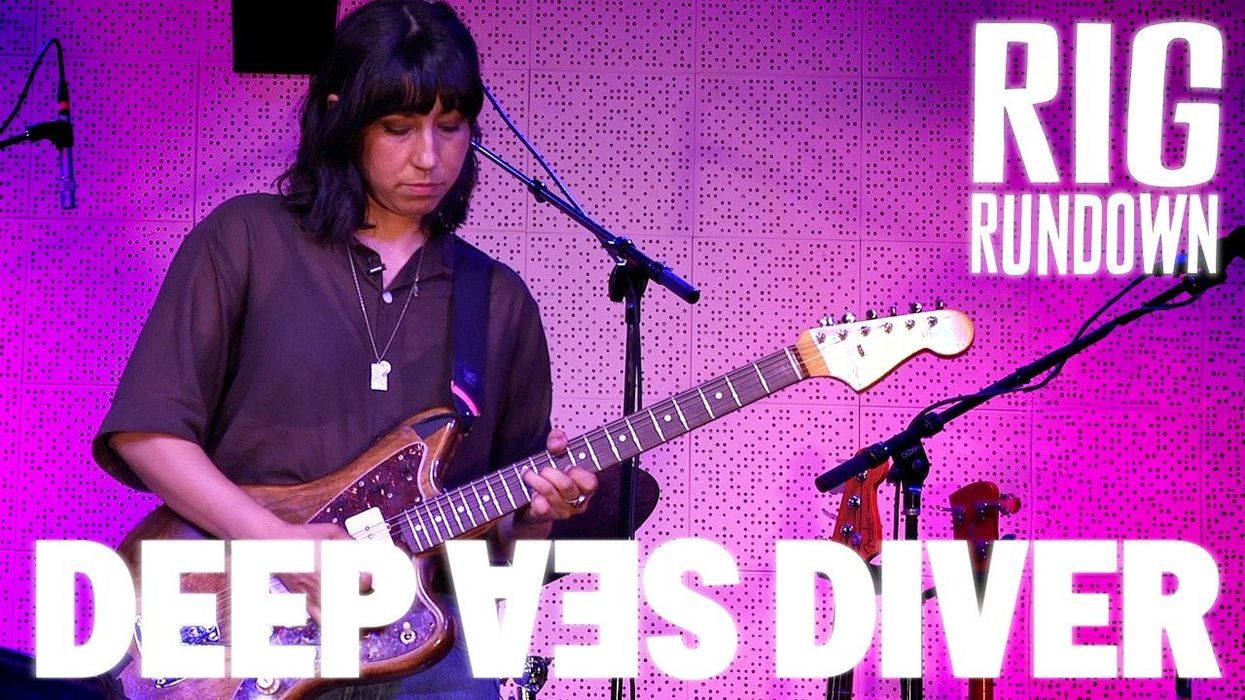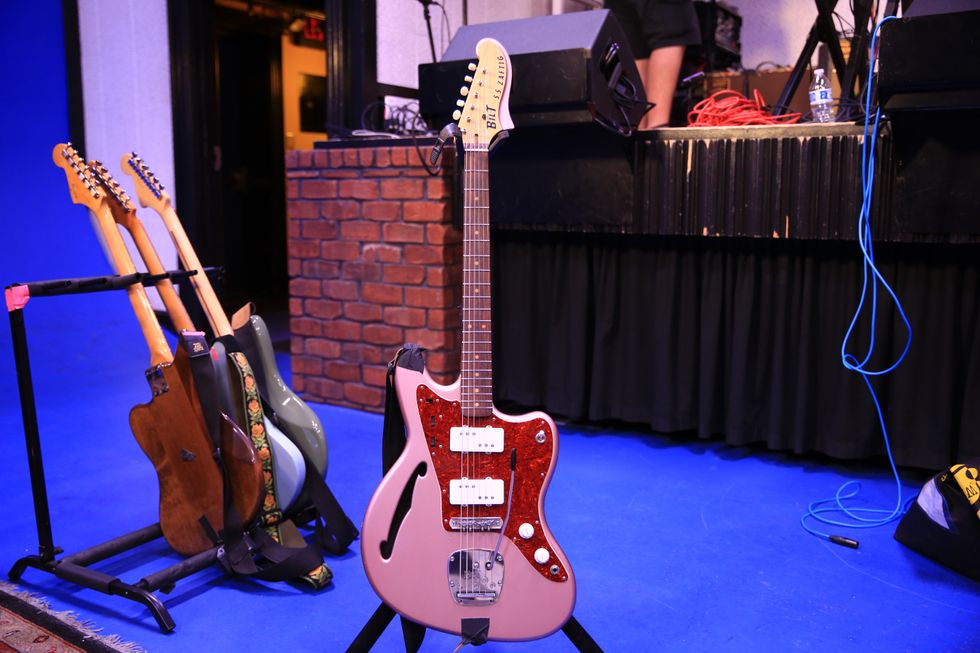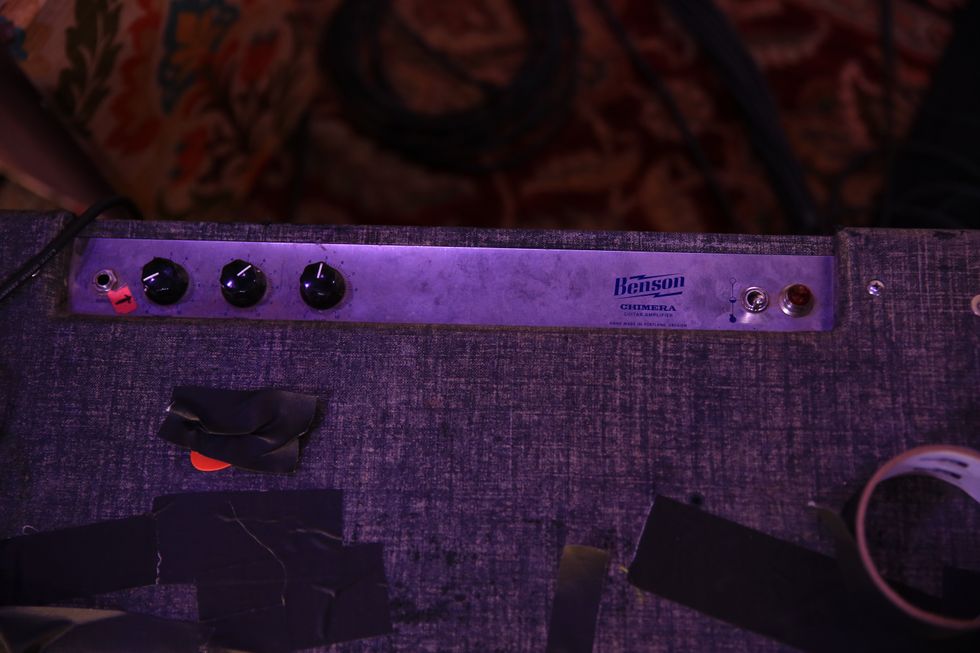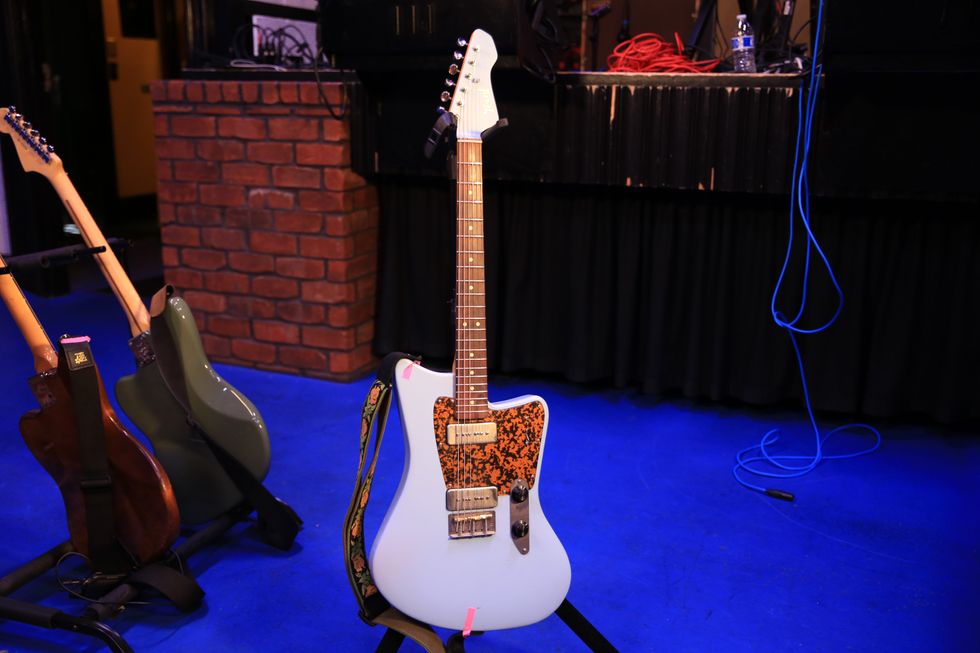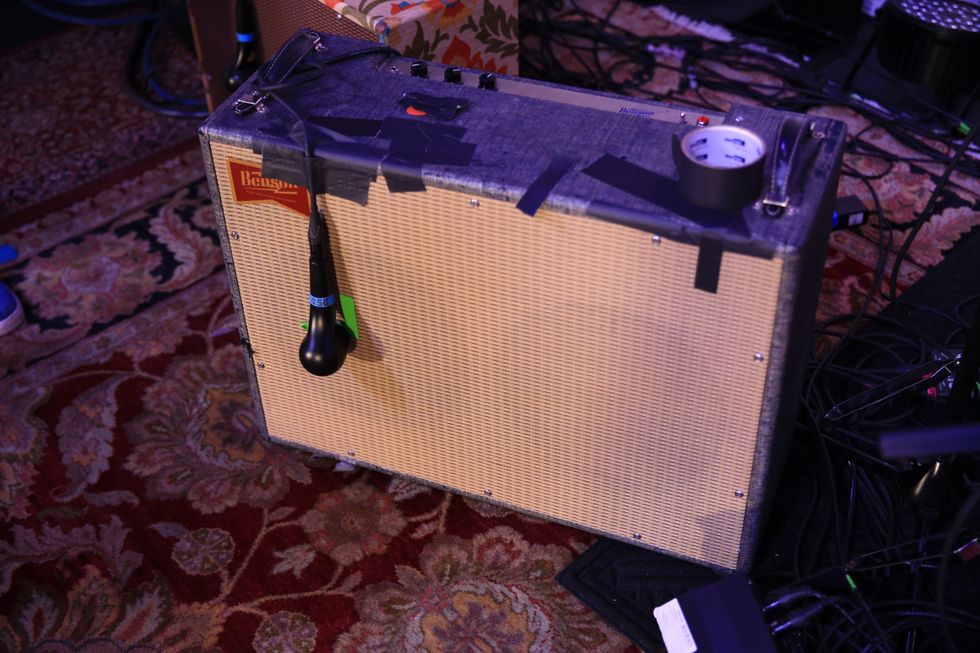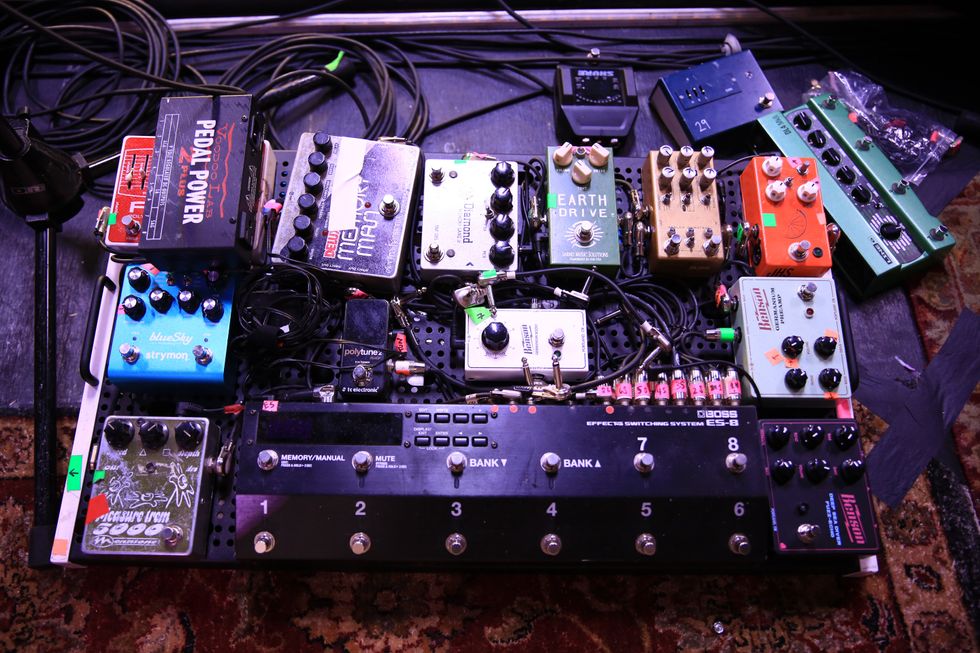 |
| |
|
“I was 32 years old at the time, so it made a huge impact on everything I was doing,” he explained. “It allowed me to get more and better gigs – really helped my reputation. It’s sort of the Grammy of the blues world. The word of mouth it generated was incredible.”
In 2002, Catfish was invited to be part of a major package tour called The American Festival of the Blues, which toured through England, Scotland and Wales, playing such venues as the Liverpool Philharmonic Hall. He recalls: “We played in these giant, legendary-type venues – 40 different venues in 40 days.” With Catfish on the tour were Eugene “Hideaway” Bridges, Angela Brown and Michael Roach. Currently, Catfish tours the UK every October and November, and tours the U.S. most of the rest of the year.
Ten of his independently-released albums are number-one independent radio chart-toppers, including his 1984 debut for Kicking Mule records, Catfish Blues. Since then, he has released eleven solo discs, culminating with the release of If I Could Holler in 2008.
I visited with Catfish about his newest release to dig into what was cookin’ in his process and how he captured this amazingly live performance in the studio.
This album has a really different feel to it, at least to my ears. Was that intentional?
Nothing about the feel of this record was really intentional; my approach has always been to take in a healthy list of tunes, both originals and songs from the treasure trove, and see what works best. Usually I don''t know if new songs are really ready until I actually go in and record them; a few weren''t ripe yet, so we''ll save them for next time. I''ll only try a few takes at most on any song; if it doesn''t work I just move on to the next thing.
The spirit I think I''ve achieved is a deeper, more hypnotic feel. More dust and bones and highways – all life''s joy and sorrow is in there. My style has become more pared down with age, and I think it has more "I''m glad to be alive" energy in it. I feel so lucky to be able to do this – it really is a great life!
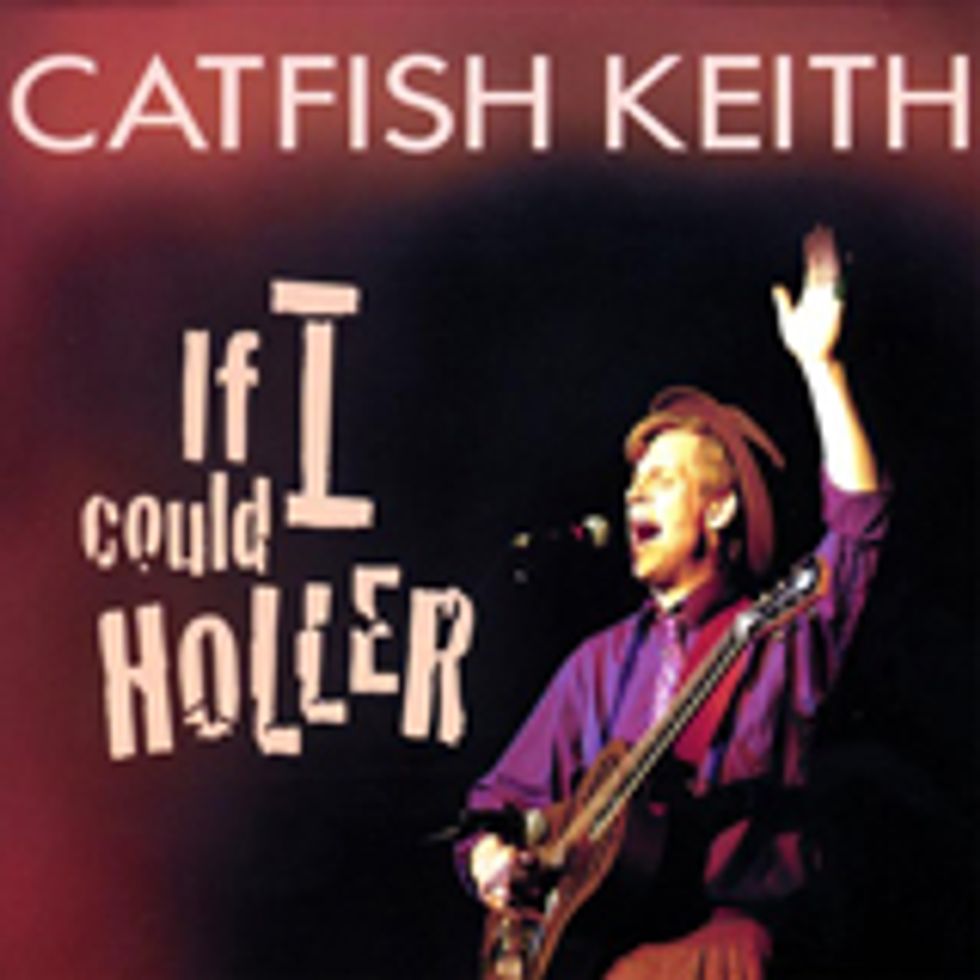 What you’ve captured is something incredibly live and in the moment, which is such a rare thing anymore. It’s extremely challenging to get that life and vitality in a studio setting. How did you pull it off?
What you’ve captured is something incredibly live and in the moment, which is such a rare thing anymore. It’s extremely challenging to get that life and vitality in a studio setting. How did you pull it off?This album was recorded by Justin Kennedy in Iowa City, Iowa. He did everything: recording, engineering, mixing and mastering. He''s great to work with; I really enjoyed his imagination and wizardry. He used a total of eight mics to capture the live sound of vocal, guitars and feet. Just around the guitars were three mics, one by the fretboard, one by the lower bout and one right in front. I used six different guitars, two were great acoustic guitars (a Flammang EL and a Collings 00 12 fret), four were various National Reso-Phonics, including two Baritones, a 12-string and the Radiotone. Every guitar does its own special thing. The 12-string has become an important new voice for me, and the title song, "If I Could Holler," wrote itself on the 12-string Tricone.
What exactly is a "Tricone," and how is that different from other resonators?
A Tricone is a National that has three smaller resonator cones; it was the invention of John Dopyera and was first produced in 1927. Dopyera considered this his ultimate invention – I think he was right! The sound is distinctive – harmonic-rich with quite a bit more sustain; it''s the perfect guitar for slide. Add to that tone the baritone scale length and low tunings, which are open Bb and Eb, the exact same tunings as the traditional open D (Vastopol) and G (Spanish), just four or five frets lower, and you got something really deep and mesmerizing.
When did you start really exploring the 12-string? What was your initial attraction to it?
I always loved 12-string since I was a teenager and was knocked out by Leo Kottke, Lead Belly, Blind Willie McTell and all that followed. Paul Geremia really is a master on it. I had no resistance to it, but didn''t end up getting one until a few years ago. National made me one and an ancient guitar-orchestra voice called my name.
Yes, guitar orchestra is really the right description. It’s a sound you can get lost in – so many layers and overtones and undertones! Was there a learning curve to learn to coax just the right set of sounds from it, or was it more intuitive than that?
Once you decide where to tune it and get it tuned up, the playing does become intuitive. The 12-string is really in its own guitar universe. Songs I play on it are very specific to that instrument – I wouldn''t do them on six string guitar. I still feel like a baby with it, but that''s the joy. It can be like riding a bucking bronco when you really get going on it, but it''s a delicate thing too.
You''ve mentioned open D and open G tunings, and I know you''ve used a little DADGAD. What other tunings do you find useful?
I mostly stick to the sort of traditional tunings. On the acoustic guitars it''s standard tuning and dropped D, though I pitch these guitars usually a whole step (two frets) lower. This way I can really bend and twang and chime the strings the way I like without too much pain. The 12-string is standard tuning, but pitched somewhere around C (four frets lower). The Radiotone wood-bodied single cone National I use for the DADGAD-type tuning on “The Cuckoo,” and my Baritones are Vastopol (Son House called this "Vestibule" tuning) or Spanish with tone centers around B or Bb.
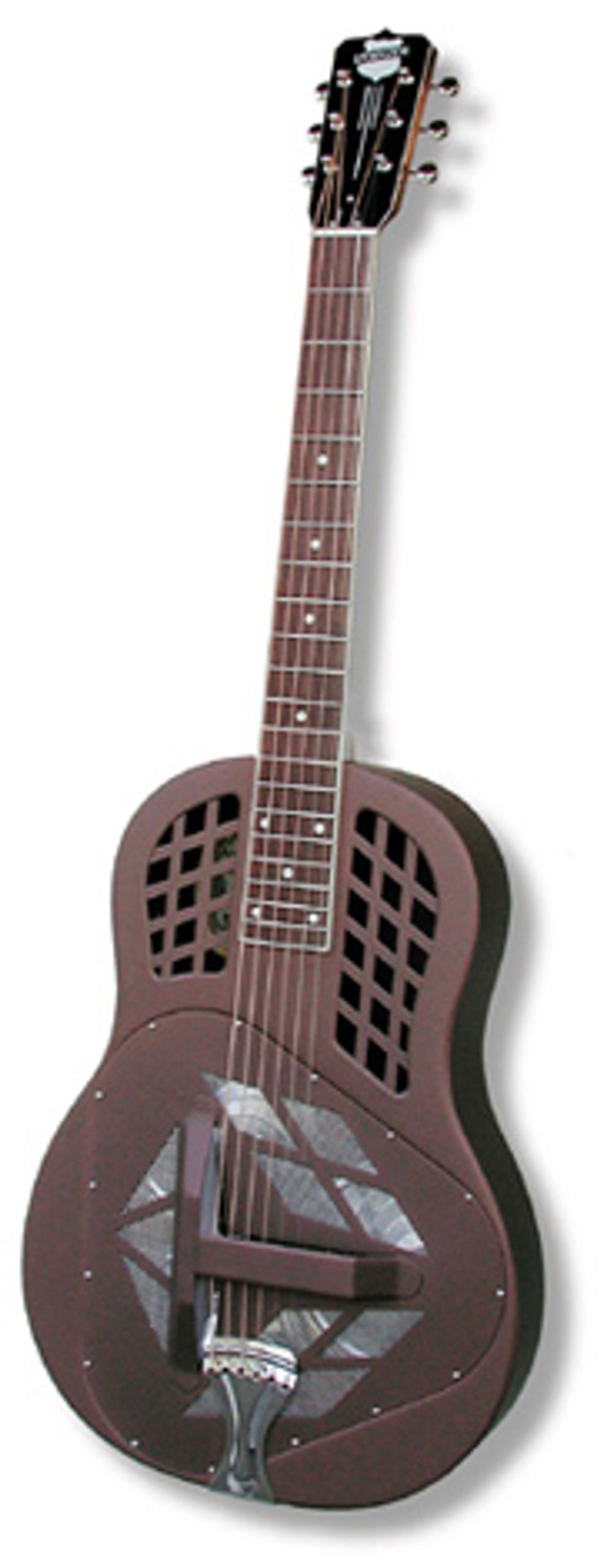 A National Baritone Polychrome Tricone |
I have several Nationals; on this album four of them were used. My primary slide guitar is a National Baritone Polychrome Tricone. It''s real deep and juicy, with the famous Tricone river-flow sustain and harmonic richness, only deeper. I always leaned toward lower tunings, and when Mac and Don at National let me play one of their earliest prototype Baritones, I flipped out! I found what I was looking for, and have used these as my preferred slide guitars ever since. This one has got big fat strings (.068-.017) and is usually in Bb Vastopol open tuning, played with fingerpicks and slide.
I have a custom wood-bodied single-cone National Estralita Baritone that I consider my Sister Rosetta Tharpe guitar, it''s used on "Rock Me." It''s played without picks, and has medium strings (.056-.013). It''s so pretty with cowboy rope binding, figured anigre top and walnut back and sides, and the strings are real bendy and snappy. I can achieve unique effects with this guitar and hopefully get the spirit of Sister Rosetta flying out with pure guitar-splanging joy.
The Radiotone Bendaway is a cutaway, single cone, wood bodied National. It has found its niche with me for sort of frailing-style, mountain banjo-influenced pieces like "Blotted Out My Mind" and "The Cuckoo." Lots of percussive snap, but also dark, hollow and a little spooky.
Finally there’s the National custom 12-string Style One Tricone. There are so many wild and uncharted tones in it, it was a challenge to capture on record, but the result seemed to have a hypnotizing effect.
What is it about a guitar that makes you want to wrap it up and take it home?
Vintage guitars were my first love, so a new guitar with classic curves and great workmanship is a great start. Then there''s the search for another unique voice that could be useful or just fun. I like a new guitar in vintage style, that way you got a lifetime ahead with a new guitar. I''ve worn out several guitars, so it''s better to start brand new for me.
Let''s talk nails. How do you do yours, and why did you decide to go with flesh instead of picks?
I use different techniques for different approaches. For the slide and National guitar, I almost always use fingerpicks – a big plastic thumbpick and metal fingerpicks on two fingers. On acoustic, fingerpicked guitar, I play without fingerpicks, using fake nails on my thumb, index and middle finger of my right hand. They are glue-on women''s nails, filed down just right, and they give me the extra strength I need to twang the strings and achieve all of the harmonic effects I''ve made part of my style. I can''t do these effects with fingerpicks on, so the fake nails became necessary to get the sound night after night. The sound is a combination of flesh and nail.
You have a bag of tricks up your right sleeve that is the envy of anybody who''s ever watched you play. How much of your technique was discovery, imitation or invention?
The guitar is wonderful in many ways. One is that it''s been re-invented again and again. I achieved my own style from absorbing many of my heroes'' sounds and making my own expressions from that. Discovering ways to make sounds fly out of the guitar is a thrill. Many ways to play might come from other genres or instruments. The way that I play harmonics, for instance, could be attributable to Harpo Marx, or the way string bends are made could go back to that zither player in The Third Man, or to Lenny Breau. But all of these ingredients are put into my own sort of acoustic blues style. These ways of playing helped expand the range of sounds for me and offered more colors to the musical palette. I suppose at that point it becomes invention.
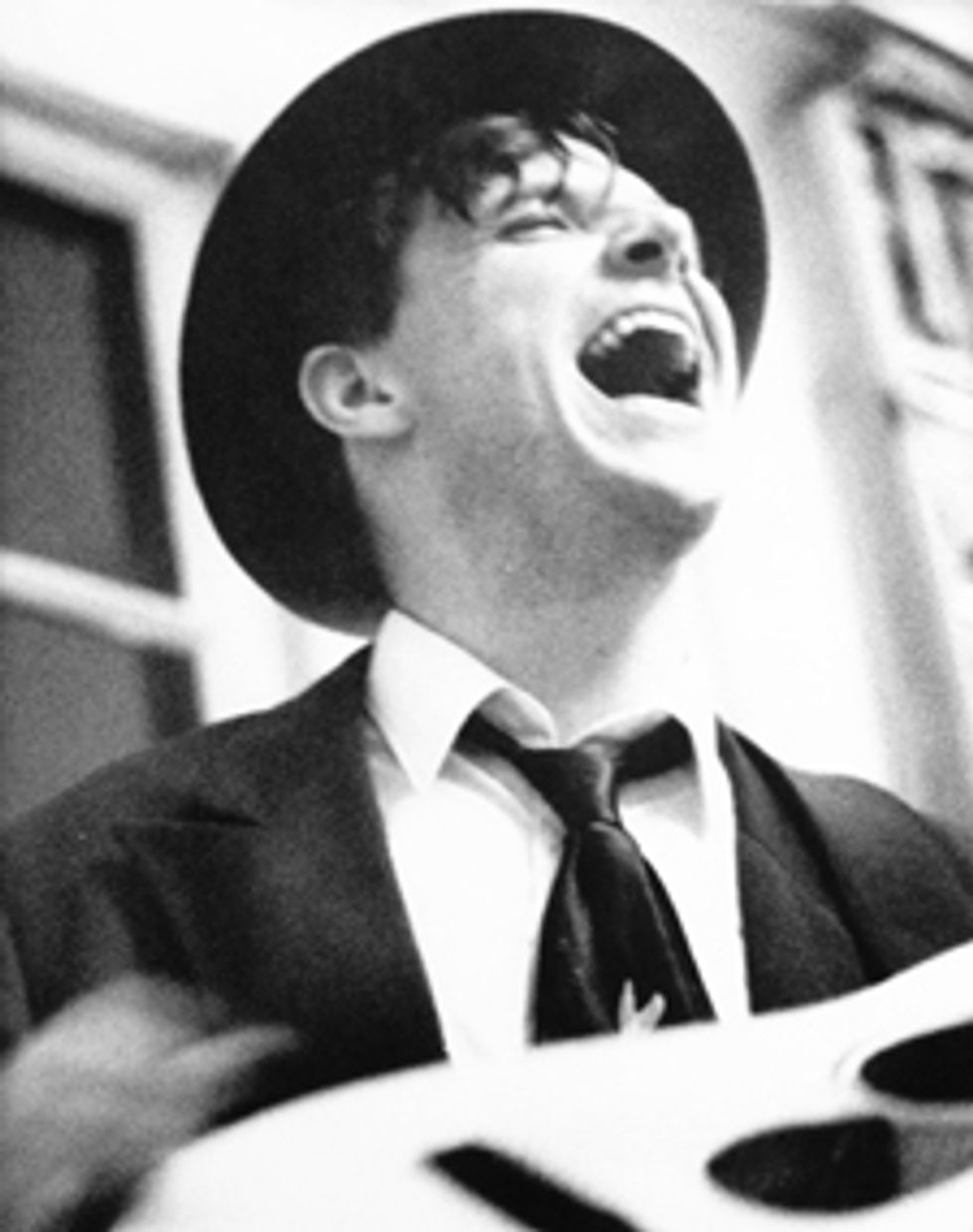 How do you go about writing music? Your originals sound utterly timeless. Is that an intentional thing, or is it a matter of the water you swim in?
How do you go about writing music? Your originals sound utterly timeless. Is that an intentional thing, or is it a matter of the water you swim in?I don''t know if "writing" is really the right term. Often, I''ll have the seed of an idea from some old song that''s been on my mind. Instead of going back to an old recording, I''ll just write new lyrics, and before you know it, you got your own song. I guess they''re timeless because the sources are. My favorite music is still the genius, classic, old-time country blues and roots music; the heartfelt, solo expression of the quirky, weird, oddball solo musician.
Your arrangements of old blues songs honor the originals and yet shine new light at the same time. How do you approach making these songs your own?
My approach is to soak up the music until its part of your own spirit, and then make your own version of it. Not much note-for-note copying, just inspiration, transformed. Also, using the musical base as a springboard for improvisation. Once you have the language of the style, then you can speak it in your own voice.
Let''s talk about some of these songs. How do you keep replenishing the library? Where do you keep finding these little gems?
There’s a deep pool of quality songs that never seems to run dry. I am amazed by the power of it. I feel I''ve just scratched the surface, even after 30-odd years of playing and 11 albums. The focus and drive just keeps going deeper. I just get into a zone and sort of hypnotize myself. I''m just lucky others seem to want to come along with me.
You made a wonderful solo guitar CD a few years back, A Fistful of Riffs, which proved your mastery of your instrument. Any plans for another solo guitar project, or other experiments in the works?
I never really planned to make an all-instrumental record. It''s only one aspect of the music. I do love the sound and twangy depth of the different guitars, and there will probably be a few instrumental pieces here and there, but I like my records to have mostly songs [with vocals]. I''d like to try a little dubbing, maybe play and sing harmonies myself, add some guitar parts. Mostly, though, my vision has remained steady: getting the most music out of one guitar, one voice and the rhythm of the feet.
You tour the U.S., Mexico and the United Kingdom frequently. Where else can our readers catch you in 2008?
My wife (and manager/sound engineer) Penny and I are out on the road about half of the year; we''re in Mexico right now, and will play in the UK and Europe this fall, and around the U.S. this summer. It''s been a blast. This is the revelation/vision I had at age 15, and it''s very gratifying to have been able to realize it. Here, over 30 years later, we''re living a great life through music.
"If I Could Holler"
Flash is Required to hear this track
Keep up-to-date with Catfish Keith’s touring schedule and new CD releases at his “string-twanging home” on the web, catfishkeith.com
Keep up-to-date with Catfish Keith’s touring schedule and new CD releases at his “string-twanging home” on the web, catfishkeith.com
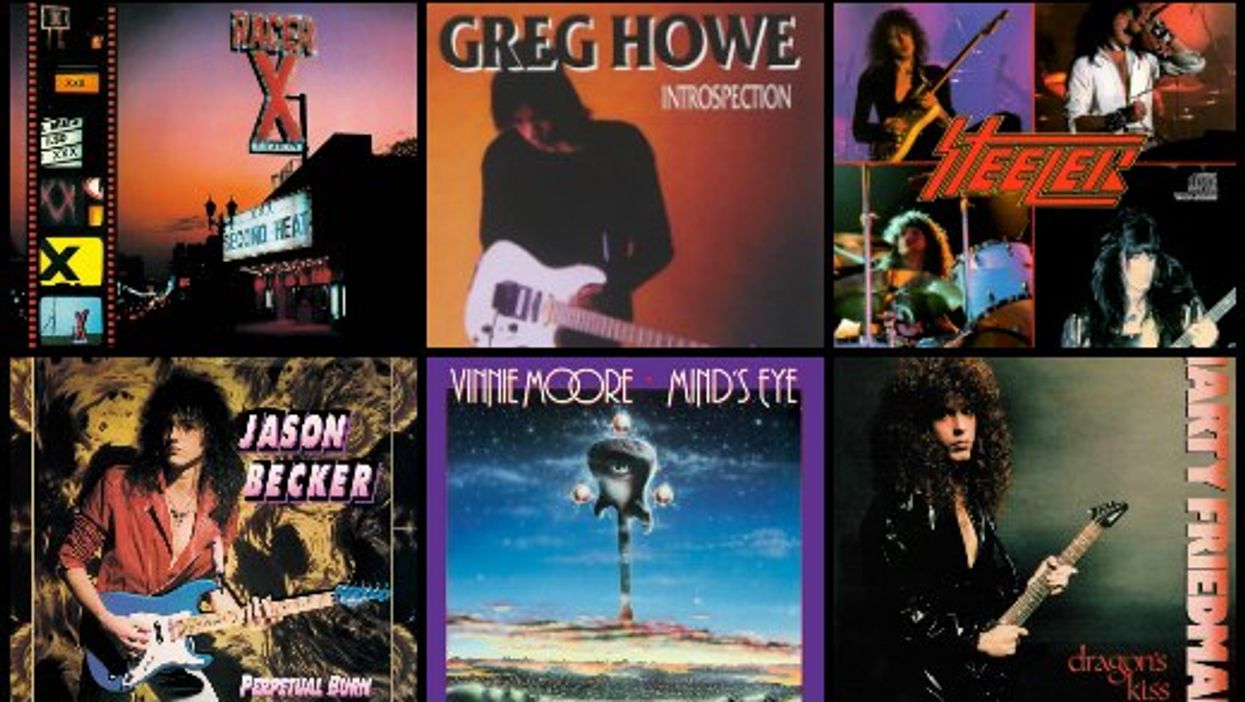
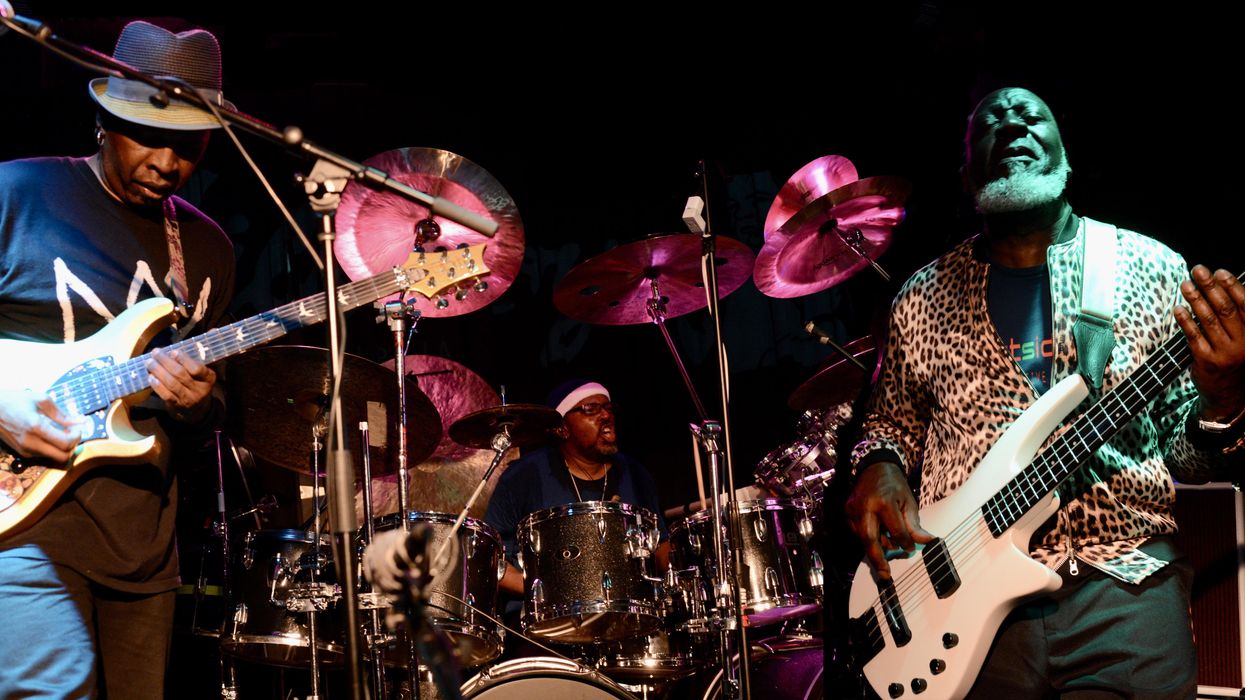


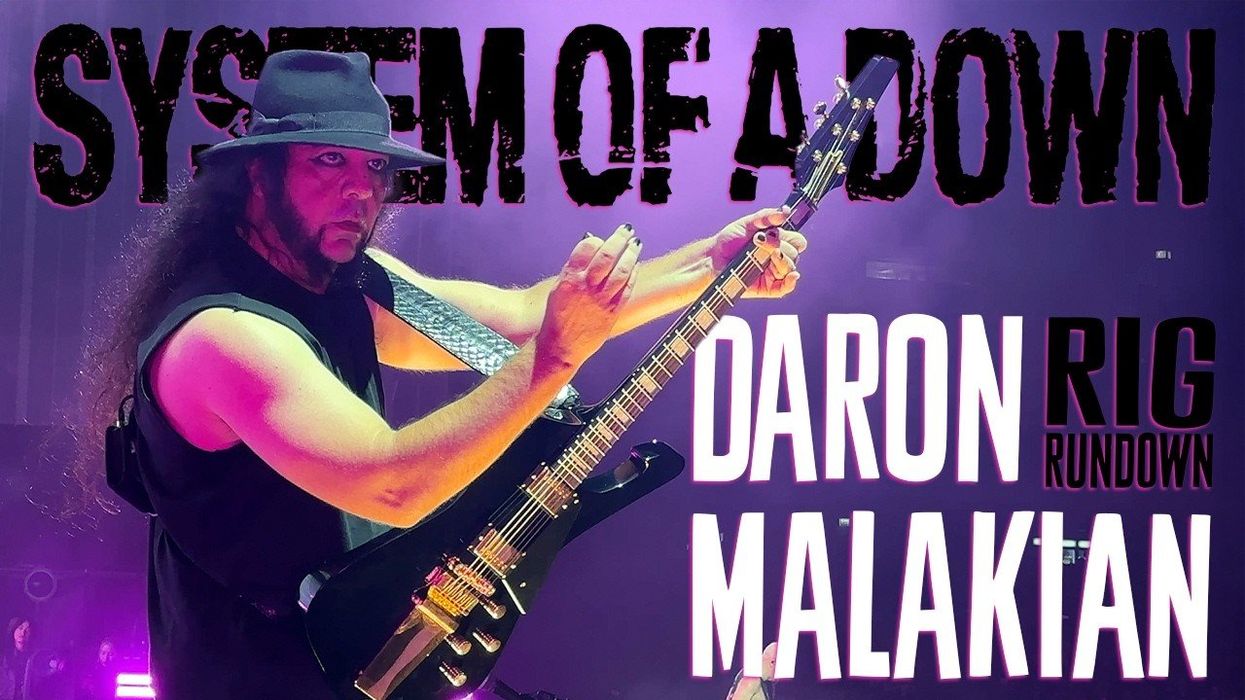
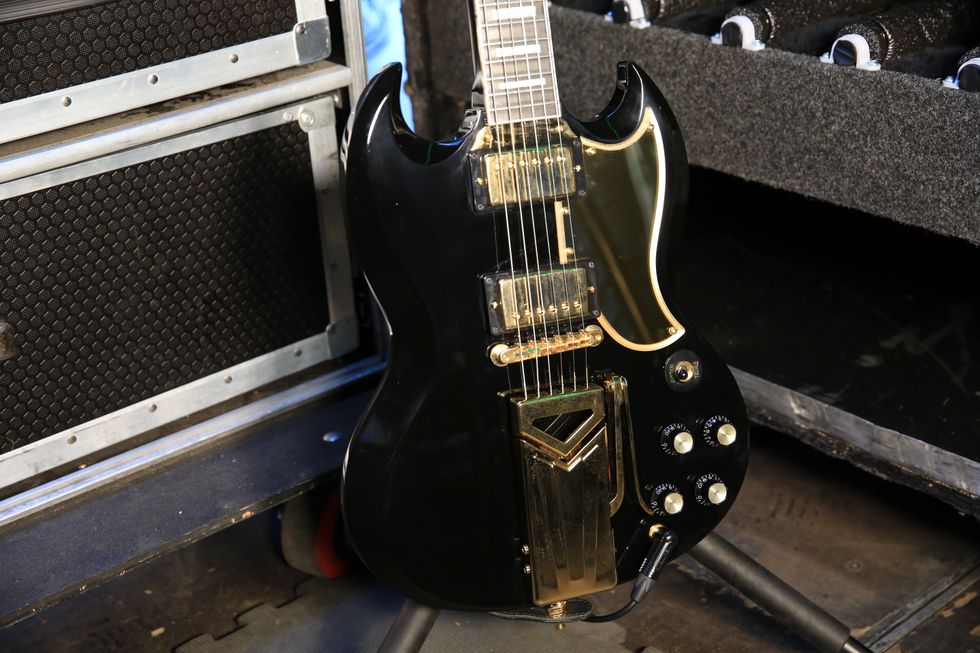
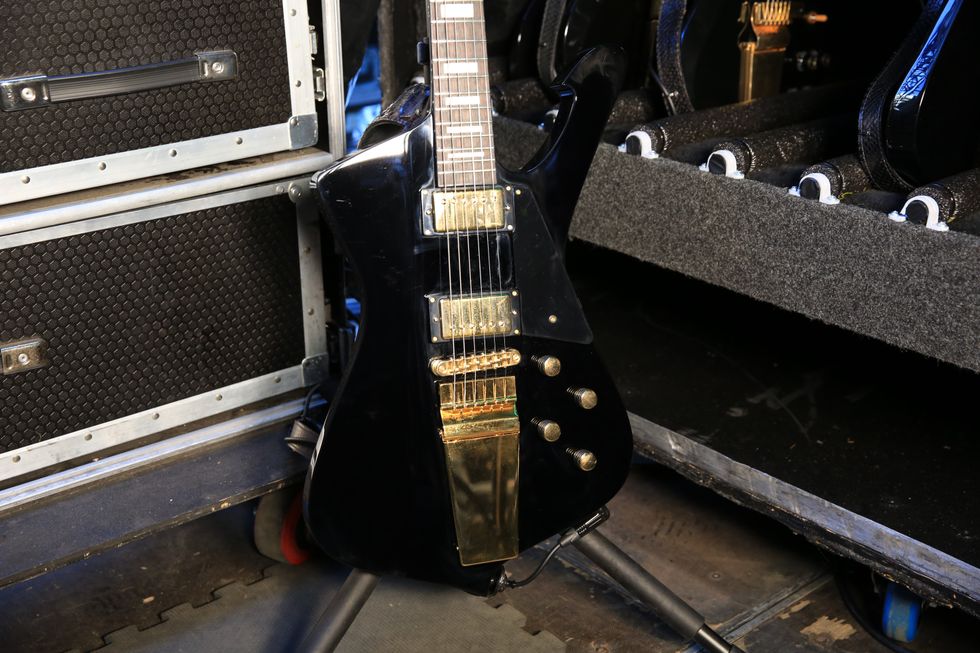
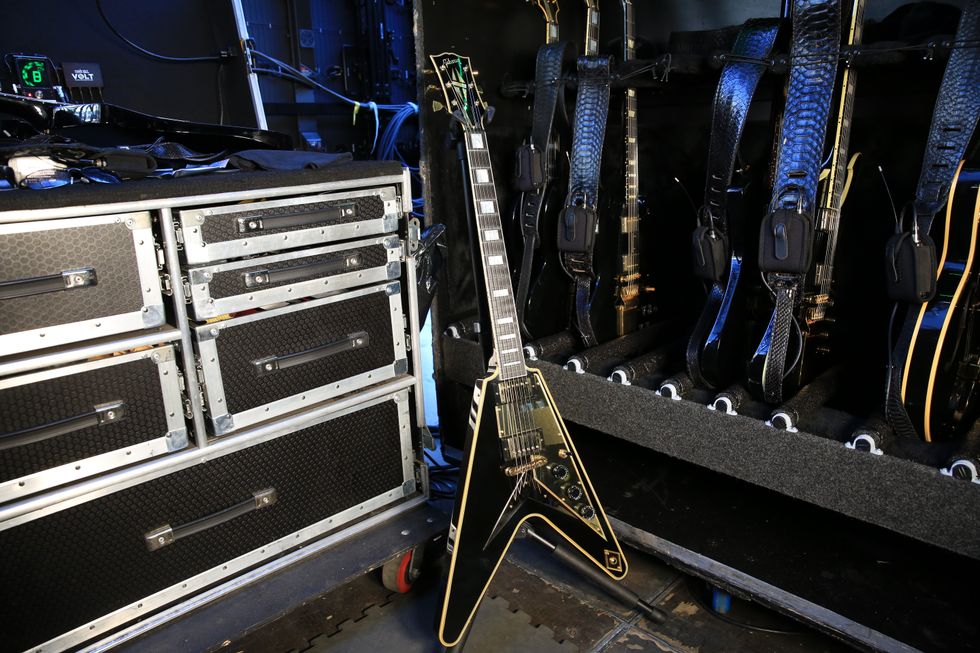
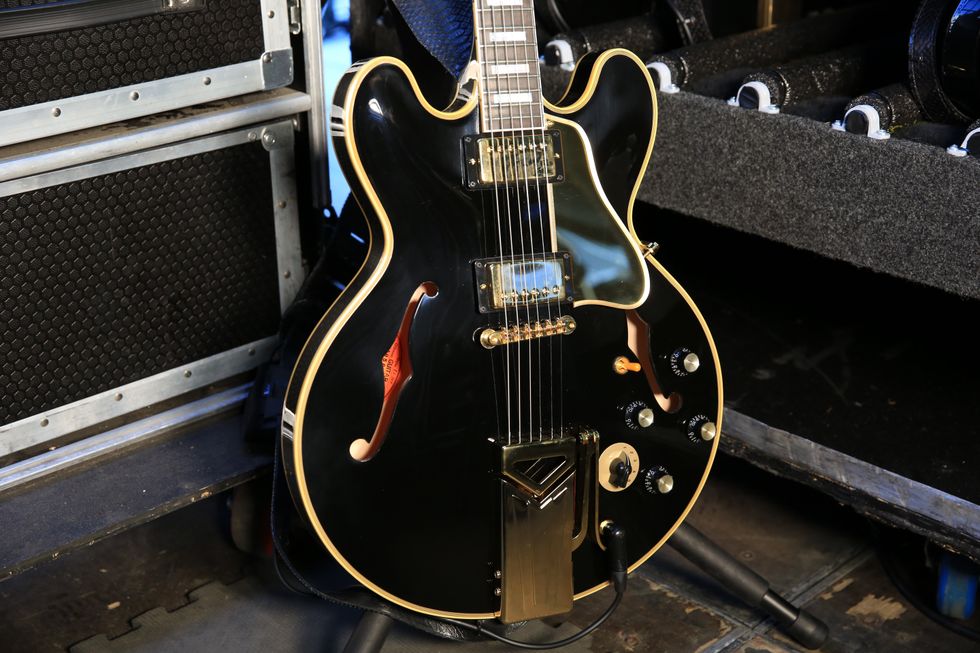
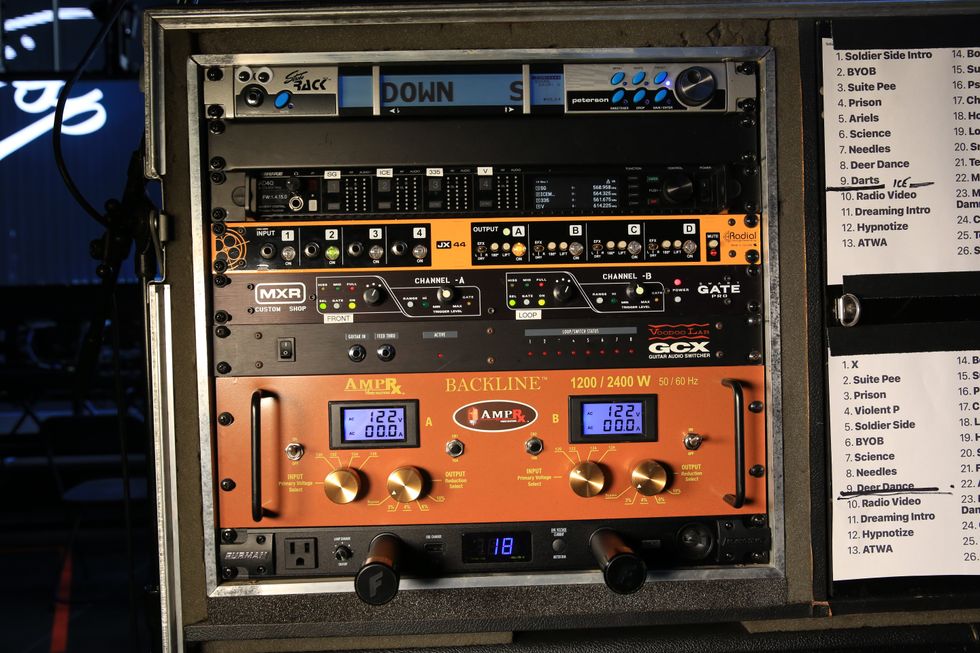
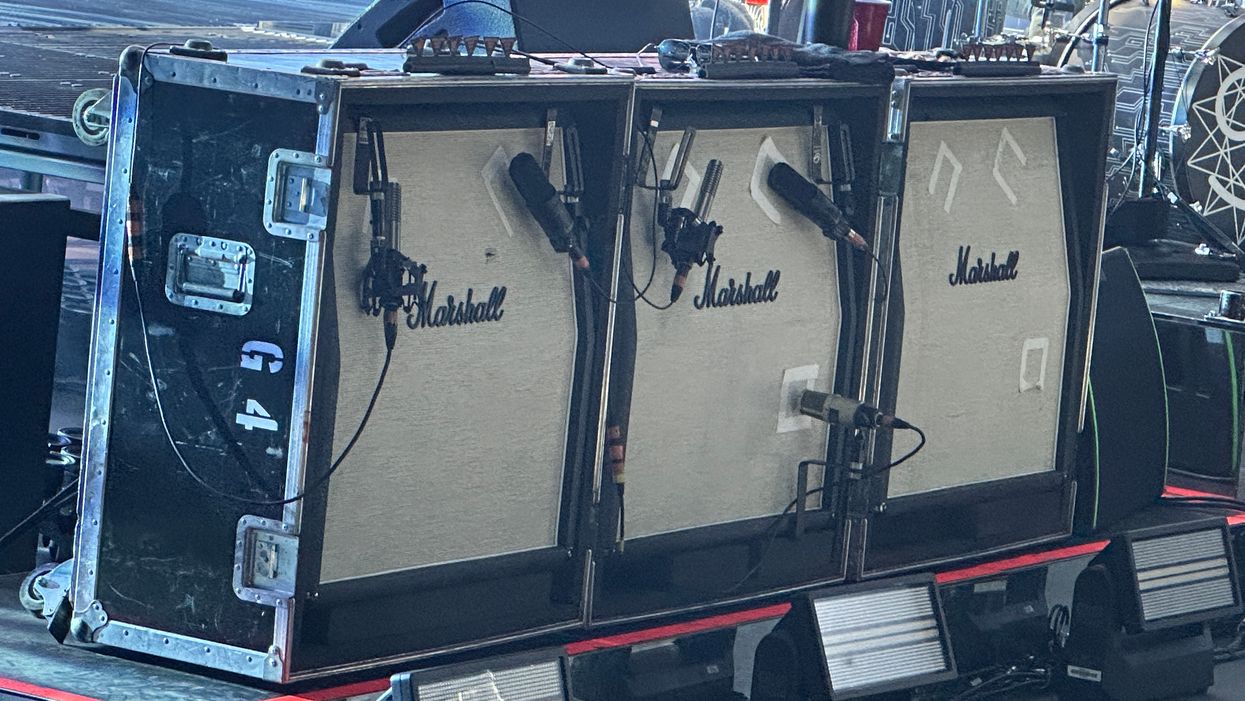
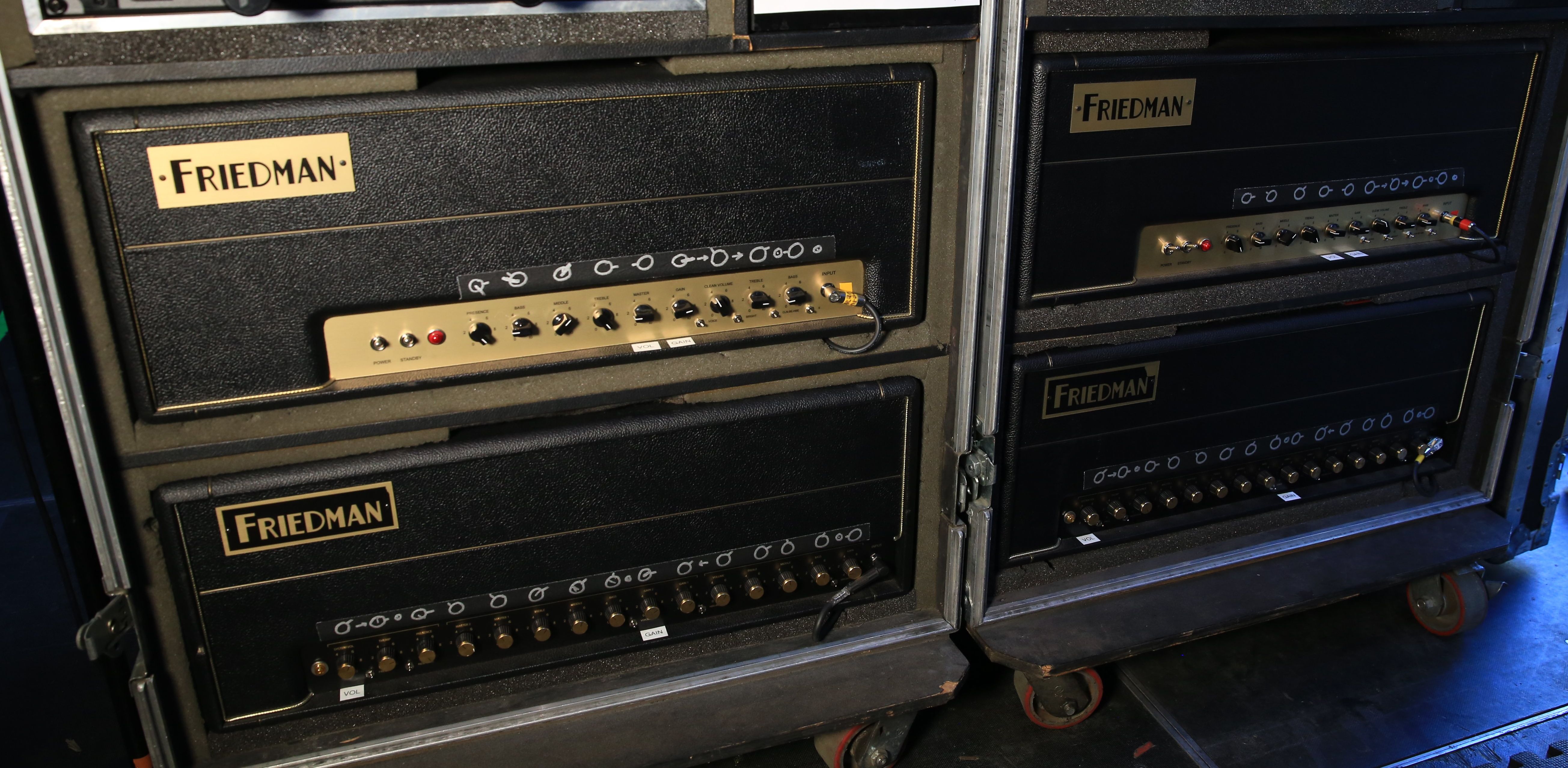
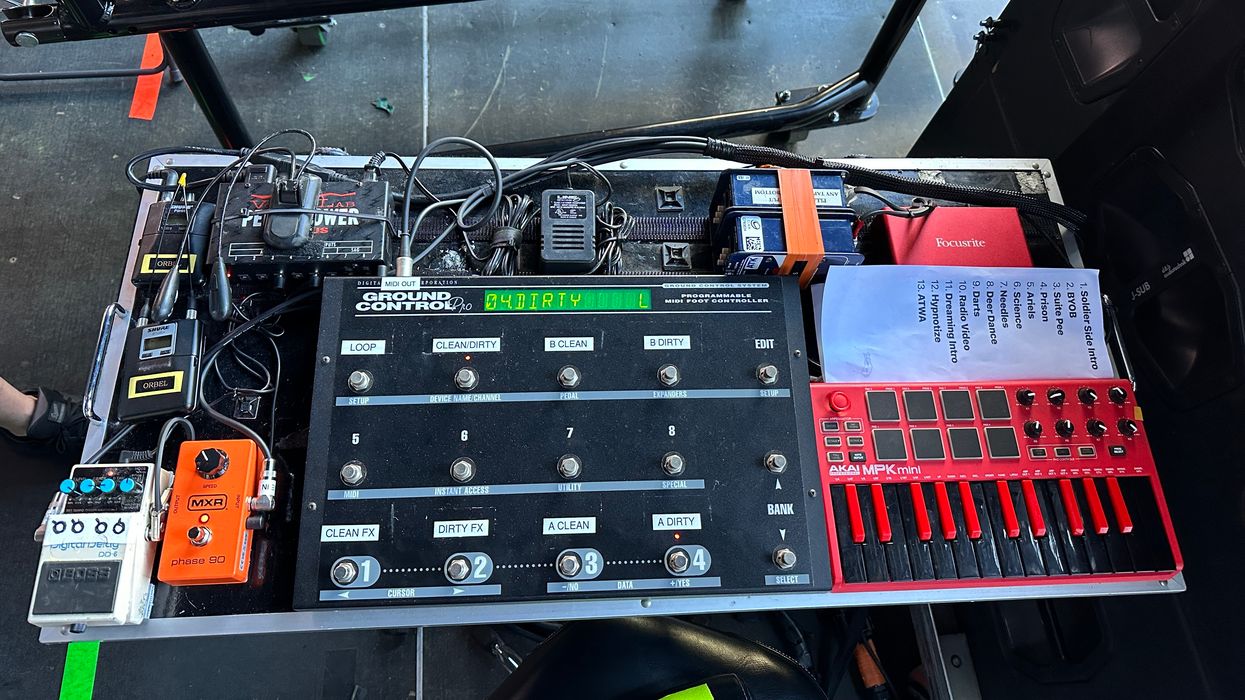

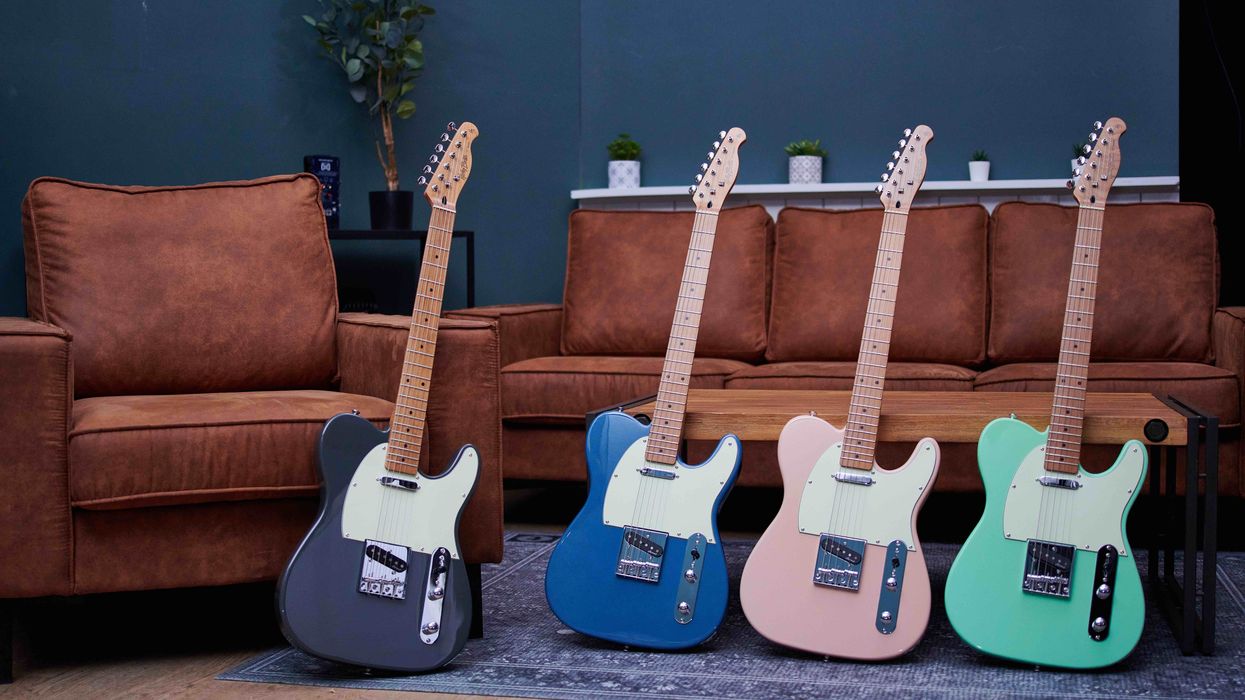
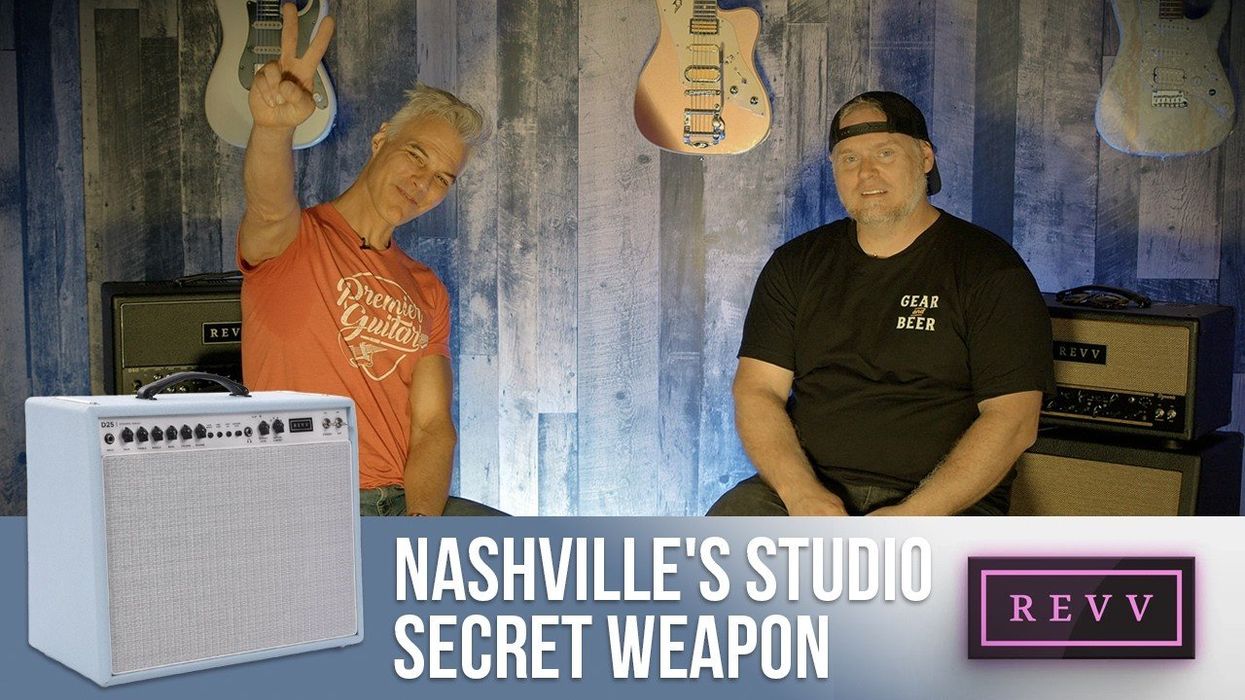

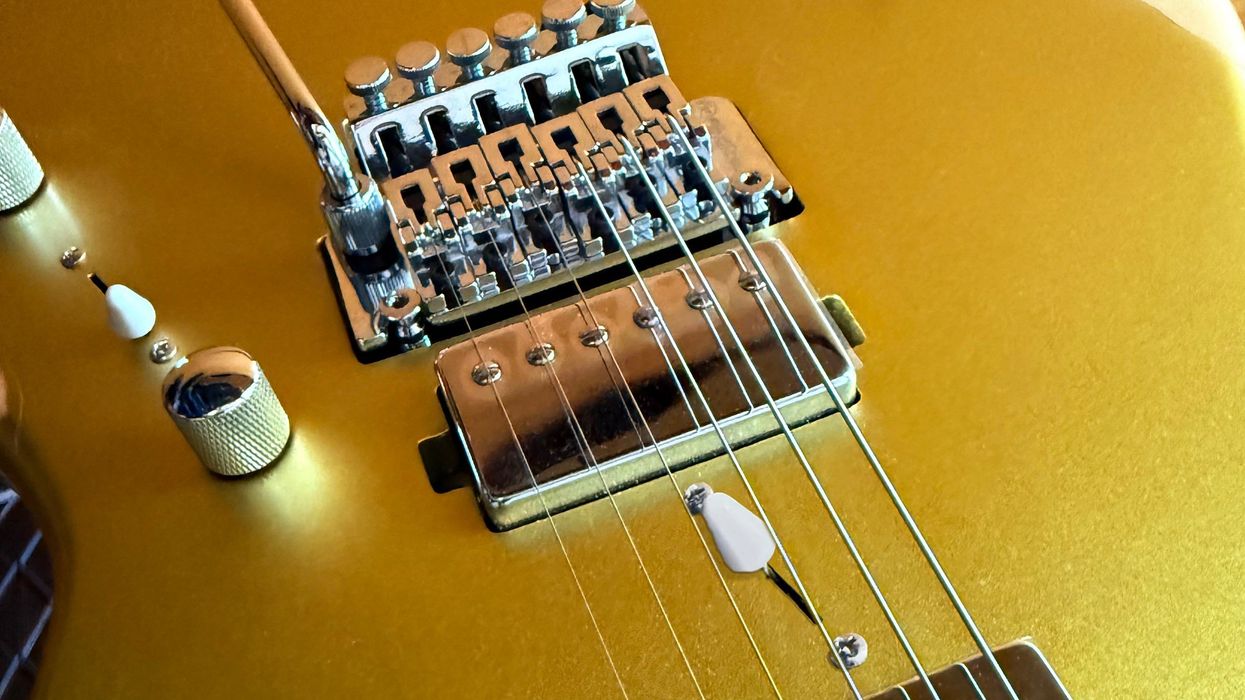

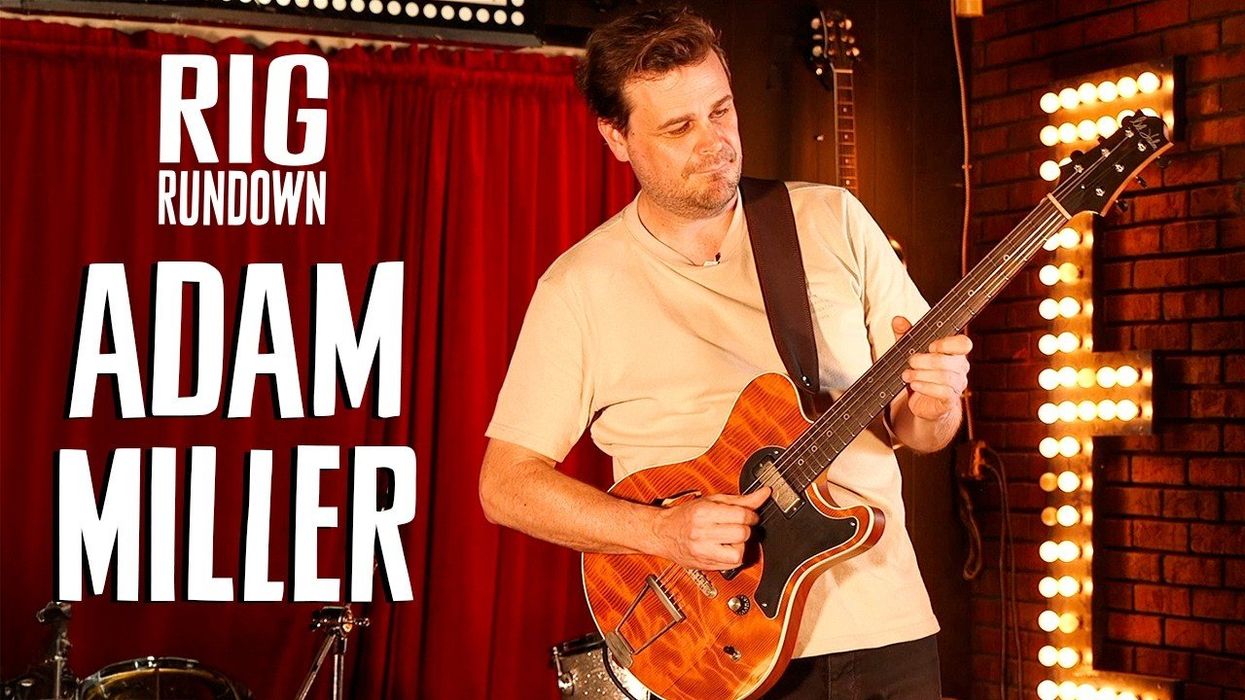
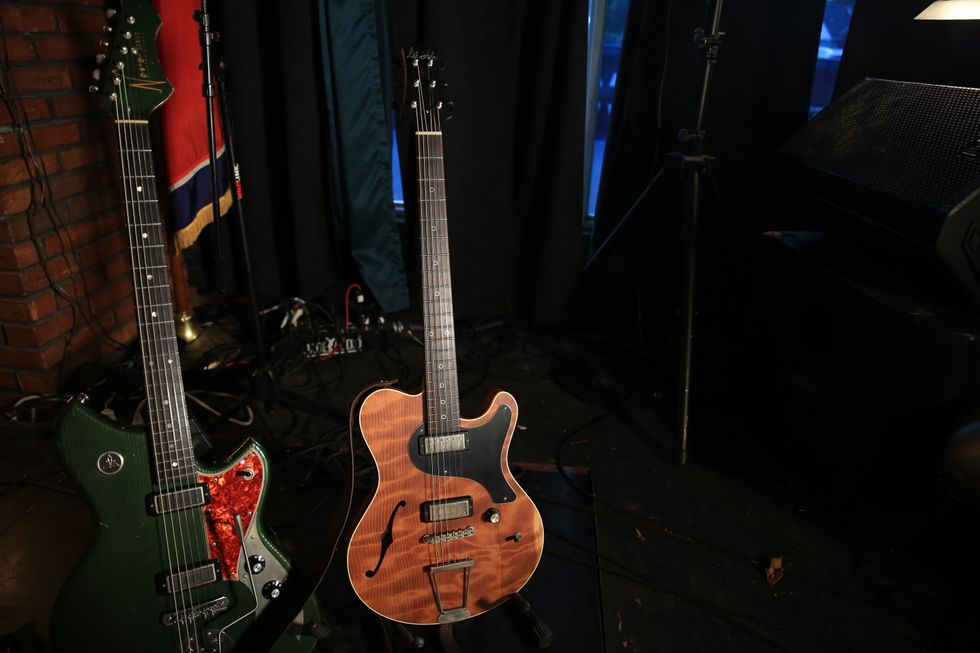
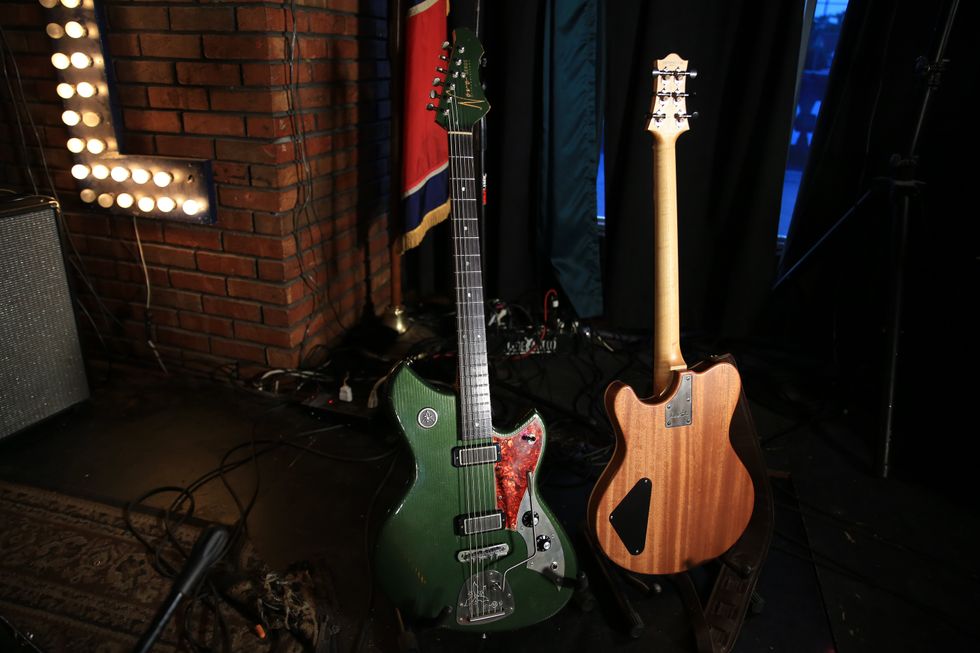
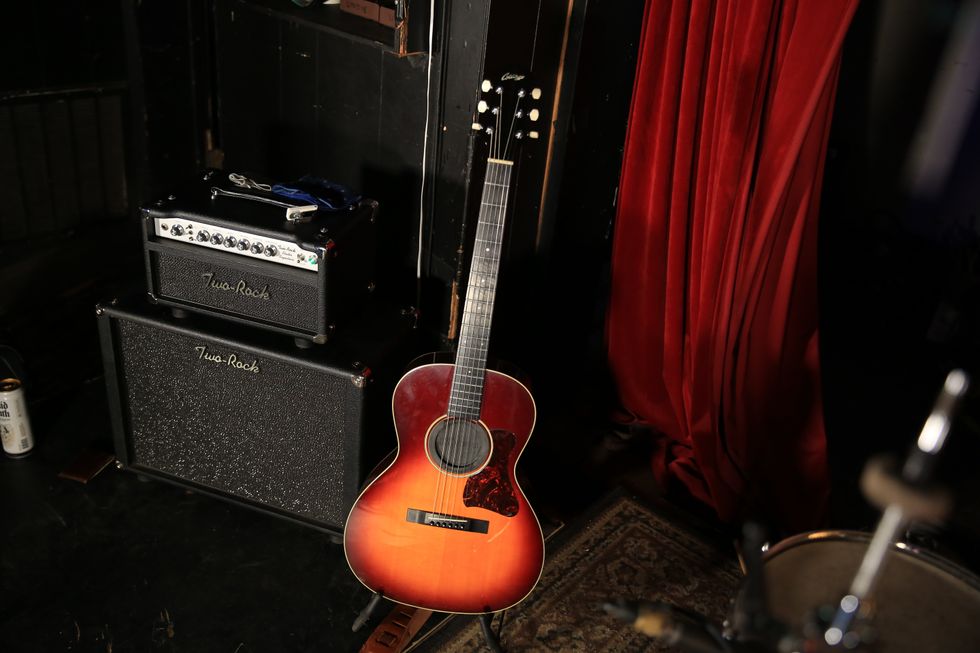
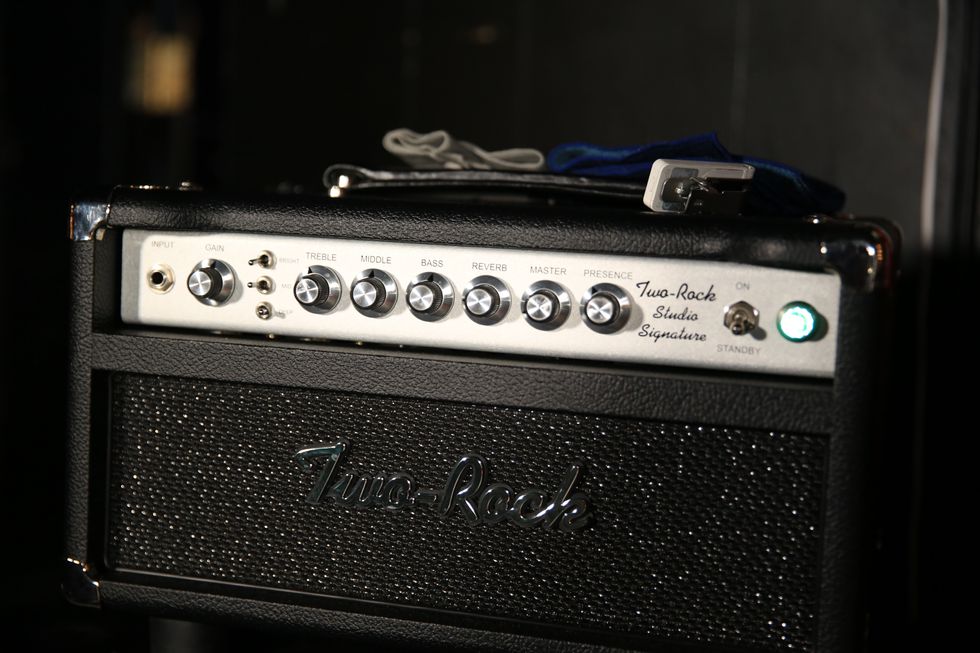
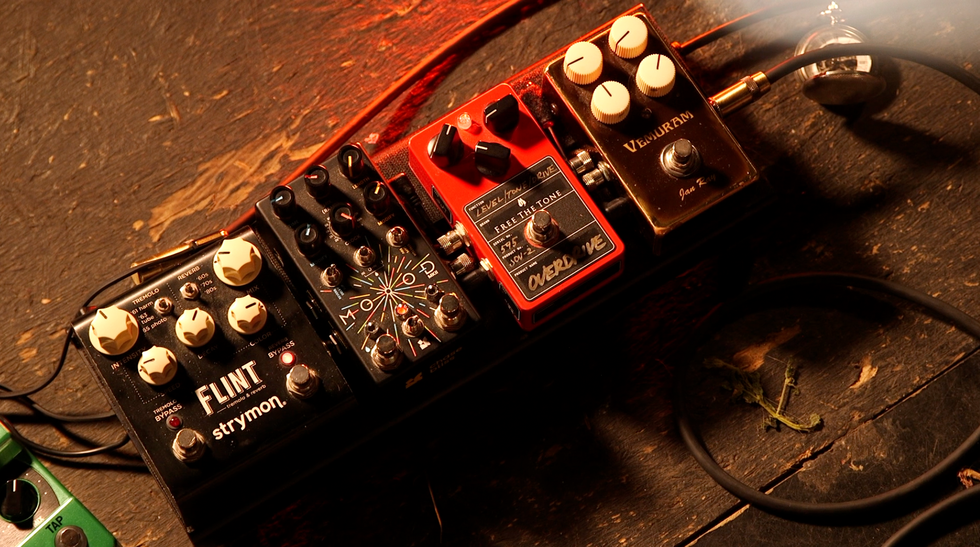
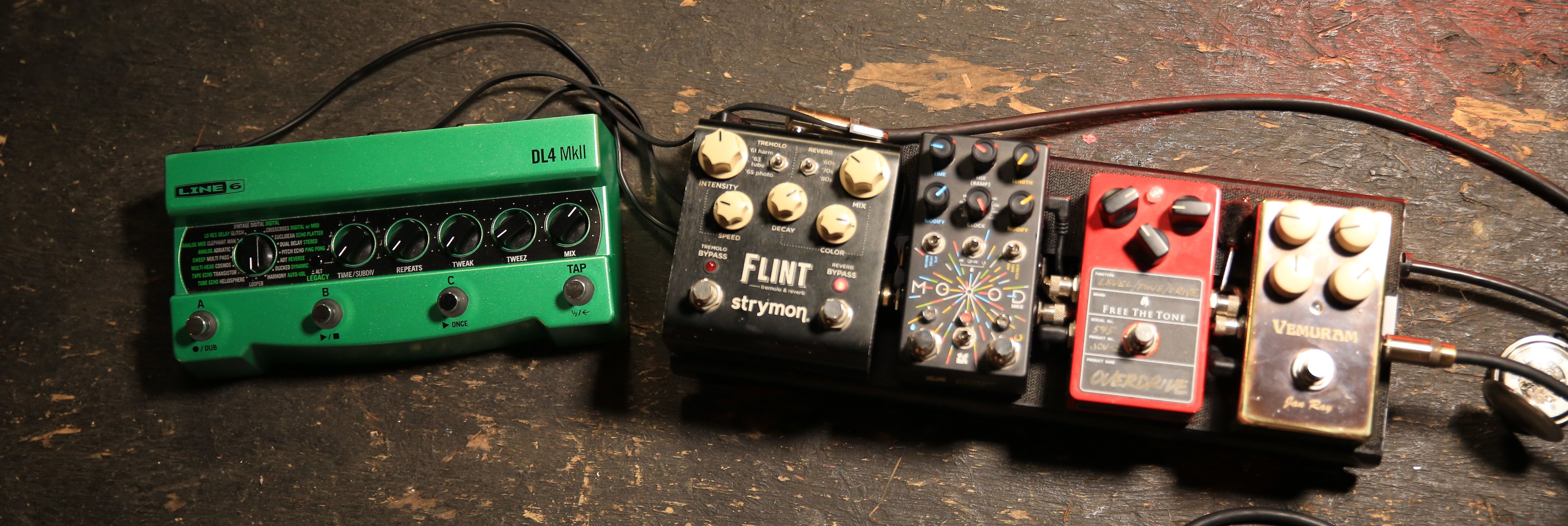 Miller’s Collings runs into a Grace Design ALiX preamp, which helps him fine-tune his EQ and level out pickups with varying output when he switches instruments. For reverb, sometimes he’ll tap the
Miller’s Collings runs into a Grace Design ALiX preamp, which helps him fine-tune his EQ and level out pickups with varying output when he switches instruments. For reverb, sometimes he’ll tap the 
